
Achieve Your Potential in Competition IOM Sailing

Vickers RC Sailing

Producer of the V11 Competition International One Metre Design by Ian Vickers.
Our workshop opened in 2014 with the V8 IOM. Since then we have produced hundreds of hand crafted IOM yachts in the Vickers design range. Yachts that have helped IOM competitors around the world achieve their potential and exceed expectations in competition.
We are currently offering the V11, the innovative design that finished 3rd at the 2019 World Championships in Port Alegre, Brazil.
When our clients return, they know they are tapping in to smart, competitive technology in IOM design and build. Stiff, Lightweight boats, that are Easily Assembled, Fast and Forgiving to sail. Join the fun!

Improve your results at the club and the regatta, with the fast and forgiving V11 from Vickers RC Sailing

Set Up and Sail
The V11 detailing is simple but effective. In conjunction with the V11 Set Up Guide, assembly is straight forward, and vital tuning information assists you to quickly understand and master your V11's potential

Vickers RC Sailing build processes are well refined and thought out.
Our boats are light, stiff and clever, keeping to a simple and effective philosophy around detailing
The V11 design is a hull, foils and bulb package to compliment the full range of conditions experienced in RC Sailing. The hull design has full volume forward and features the familiar chines and tumblehome of the modern IOM for reduced weight and windage, as well as good tracking characteristics. The V11 features our peaked style foredeck for efficient water shedding when buried downwind and a geometrically strong shape for the forestay and mast ram areas.
Foils are slippery and strategically positioned with the rig to balance the yacht. The V11s forgiving balance through the wind range, allows the skipper to focus on the race at hand, and not rely on micro steering to maintain a consistent VMG.
The rig sits solid on its deck stepped mast step, complimented at deck level with an encapsulating mast gate arrangement over the mast ram. The rudder tube is rigidly supported inside the moulded servo tray.
Hull construction is from E-Glass Fibreglass Cloth and High Grade Epoxy Resin.
The foils are Carbon Fibre Layup with High Grade Epoxy Resin.
Paint system is a 2 pot Urethane and the boat is thoroughly post cured before finishing.
The V11 Features-
Plastic main hatch access.
Ready to accept RMG Winch and Standard sized Rudder Servo
Bow Bumper attached.
Hardware is Bantock including an adjustable mast ram, adjustable mainsheet post and tiller arm.
All necessary fittings attached for standing and running rigging.
The V11 comes out of our workshop in Beach Haven, Auckland New Zealand and is ready to accept rigs and electrics.
We also make sails that can be added to the order, or ordered separately.
So hit the enquiry button to discuss delivery times and options.
We are ready to help.

Essential to success in sailing comes down to the Rig and how it is set up and tuned. The V11 comes with a Set Up Guide that covers all the expert information needed to set up like the guns. It specifies the hardware, construction and tuning information to get your rig and sails set up and sailing near optimum straight off the bat, so you can enjoy your racing and punch above your weight.
Include Sets of sails from Vickers RC Sailing and enhance the experience.

Vickers Rc Sailing is back taking orders again for the V11
We look forward to hearing from you
Thanks for submitting!


Introduction: RC Boat

How to make an easy and fast RC Boat!
Step 1: The Plans
Here you have the boat plans in .dwg and .pdf format.
Download the .PDF plans if:
- You don´t know how to use AutoCAD yet.
- You don´t have a laser cutting or CNC machine.
Attachments

Step 2: Materials Needed

Build the boat:
- 3 and 5 mm plywood panels.
- Coping saw.
- Sand papers.
- Polyester resin.
- White glue.
- Red, black and white paint.
- Inkjet with white and decal sheets.
Electronics:
- 15kg servo.
- CNC Coupling.
- 200A brushless ESC.
- 115 mm Rudder Shaft.
- HB 3650 Brushless motor.
- 3 channel receiver.
- FS-CT6B transmitter.
Step 3: Cutting the Pieces

- Resize the .PDF as you wish for making a bigger or smaller boat. This model is 900mm long.
Tip: Under 550mm boats built with this plans tend to submerge when the lake is choppy. Be careful!
- Print the pieces in white paper sheets and stick them on the 3mm panel.
- Draw the contour of the pieces with a pencil into the plywood.
- Dettach the papers and cut the panel following the lines you have done before.
Note: Don´t cut Half of Deck pieces until you have read Step 6.
Step 4: Hull Bottom

- Glue the bottom pieces to the transom.
Tip: Sand down the inner parts of the bottom pieces before for creating a strong glued joint.
- When the trasom glue has dried up, put the bow sections together.
Tip: Glue four semi-spheric wooden sticks as bilge keels. They will help the boat going straight at high speeds and rolling less.
Step 5: Hull Sides

- Repeat the Step 3 process with the side pieces.
Notice the extra lenght added to the rear pieces for hiding the rudder.
Step 6: Deck

- Join the Half of Deck paper sheets together with cellophane tape or draw the contour of one piece and later the other one with the same sheet.
- Decide the cockpit size and cut the deck squared gap with a cutter. It may vary depending on the motor and batteries you are going to use.
Tip: Don´t make a big gap. The deck is straight until it reaches the yellow line. Exceeding it may cause problems when fitting the cockpit.
Step 7: Waterproofing the Boat

Polyester resin is a good sealer and adds extra strenght to the structure. Without it boats tend to dissasemble while crashing or after a few days touching the water.
- Mix it with two catalyst drops in a can. Pour it inside the boat and spread it over all surfaces and joints.
Step 8: Motor and Rudder Mount

- Attach the rudder shaft to the transom with four screws.
- Cut another 5mm piece. The servo support must have four drilled holes.
- Cable ties are a simple way of making a servo keep its place. Pass them through the holes.
Tip: Install a rubber bellow enclosing the servo bar. Avoid water to seep in!
- Make a 5mm plywood motor mount. We are using the HB 3650 Brushless Motor.
- Align the motor with the 4mm propeller axis and glue the mount to the bottom pieces.
Tip: Seal the axis and bellow with lithium grease. Without it water could flow inside the hull easily.
Accessories as trim tabs and turn fins can be bought or made using aluminium plates.
Step 9: Cockpit Brackets

- Make an U structure using thin plywood sheets and squared sticks, the cockpit must fit in the gap.
- Glue four screws to it. Their nuts won´t let the cockpit fly off while moving.
Tip: An easier yet effective way of sealing it is making the last picture´s four corner sticks frame. When you have the cockpit in place and the boat ready to sail, paste electrical tape on the cockpit-hull junction.
(The last picture is another boat, its Instructable will be ready soon!)
Step 10: The Cockpit

This model´s cockpit is made out of fiberglass.
- Give shape to a polystyrene sheet using sand papers. This is going to be the mold.
- Wrap it in plastic. This will help to separate the final pieces.
- Add fiberglass strips soaked with resin all around the mold.
- When dry, apply more soaked strips to put the upper and lower cockpit together.
(In the newest models I use another technique to make the cockpits, I will explain it soon)
Step 11: Add Some Extras

- Add four squared sticks to the finished cockpit. Make sure they fit the lower U structure!
- Drill four small holes to let the screws pass trought the cockpit.
- Air intakes look nice and help to cool down the electronics and the motor. But be careful with the watertight!
Tip: For small models don`t make gaps for the intakes, just glue them to the wood panel.
Step 12: Closing the Hull

- Glue the upper and lower hull together.
- Sand down the projections of the upper hull.
Tip: If they are big, use a cutter first to help you.
Step 13: Decorative Spoiler

A non functional spoiler sounds weird.
These boats don´t run fast enough to make it work properly, so it is more like an extra accessory.
Step 14: The Boat´s Base

To avoid paint scratches or rudder dents a 5mm plywood stand should be built.
Tip: Make it waterproof or fix the pieces together with another glue. White glued parts tend to separate while in contact with water.
Step 15: Base Painting

White paint is used as base. The spoiler looks great in red.
Step 16: Extra Painting

The boat´s appearance will be better if we add extra colours as red or black.
Design your own scheme to make yours an unique boat in the world!
Step 17: Adding Decals

- Search on the Internet logos you like or create your own ones. Paste them in a Microsoft Word tab.
- Print them on decal sheets. You may have to change the inkjet settings before printing.
Tip: For Epson inkjets you should change the paper type to Epson Photo Paper Glossy or Premium Glossy. Results may vary depending on the sheet quality, the ink type and the printer model.
- Apply some varnish layers to the sheet. If the ink makes contact with water, decals will smudge. Be careful!
- Inmerse the decals in a plate with water one by one. Paste them to the boat and dry them with paper.
Step 18: Varnish the Model

Apply 2 or 3 varnish layers to the boat.
You can add more to the decal areas to be sure they are not going to move or smudge. Safety first!
Step 19: Ready to Run

- Install the battery, the ESC controller and the receiver.
- Put some cloths inside the boat to soak up water if cracks appear.
Our RC Boat is now finished!
Recommendations

Woodworking Contest

Art and Sculpture Contest

Microcontrollers Contest

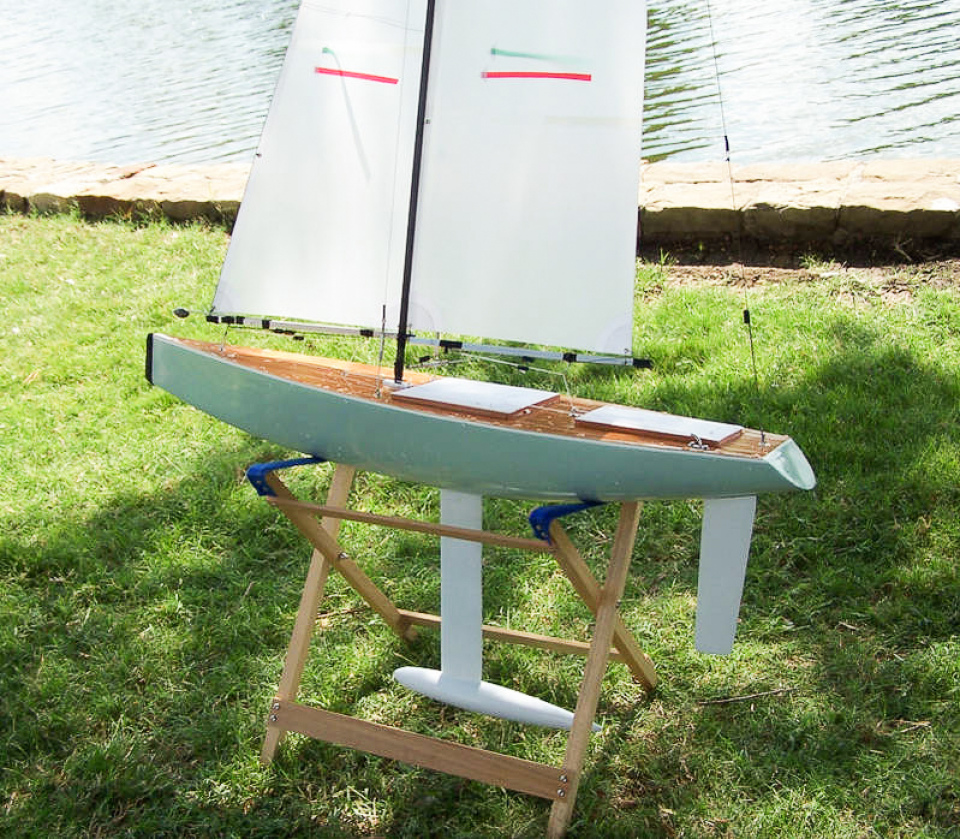
Build your own radio controlled yacht
Are you ready to embark on the exciting journey of building your very own model rc yacht.
Our comprehensive eBook has clear building instructions and step-by-step photography for the Racing Sparrow 750mm RC Yacht.
What we cover in our boat building eBook
Download a sample of our eBook
Even those with limited building experience can join in on the fun with minimal materials and a simple toolset. Our eBook by New Zealander Bryn Heveldt covers strip planking, fibreglass strengthening, mould and casting techniques, electrics installation, spray painting and masking, sail making and tuning.
To get started on your Racing Sparrow model RC yacht project, purchase our eBook and download the PDF now.
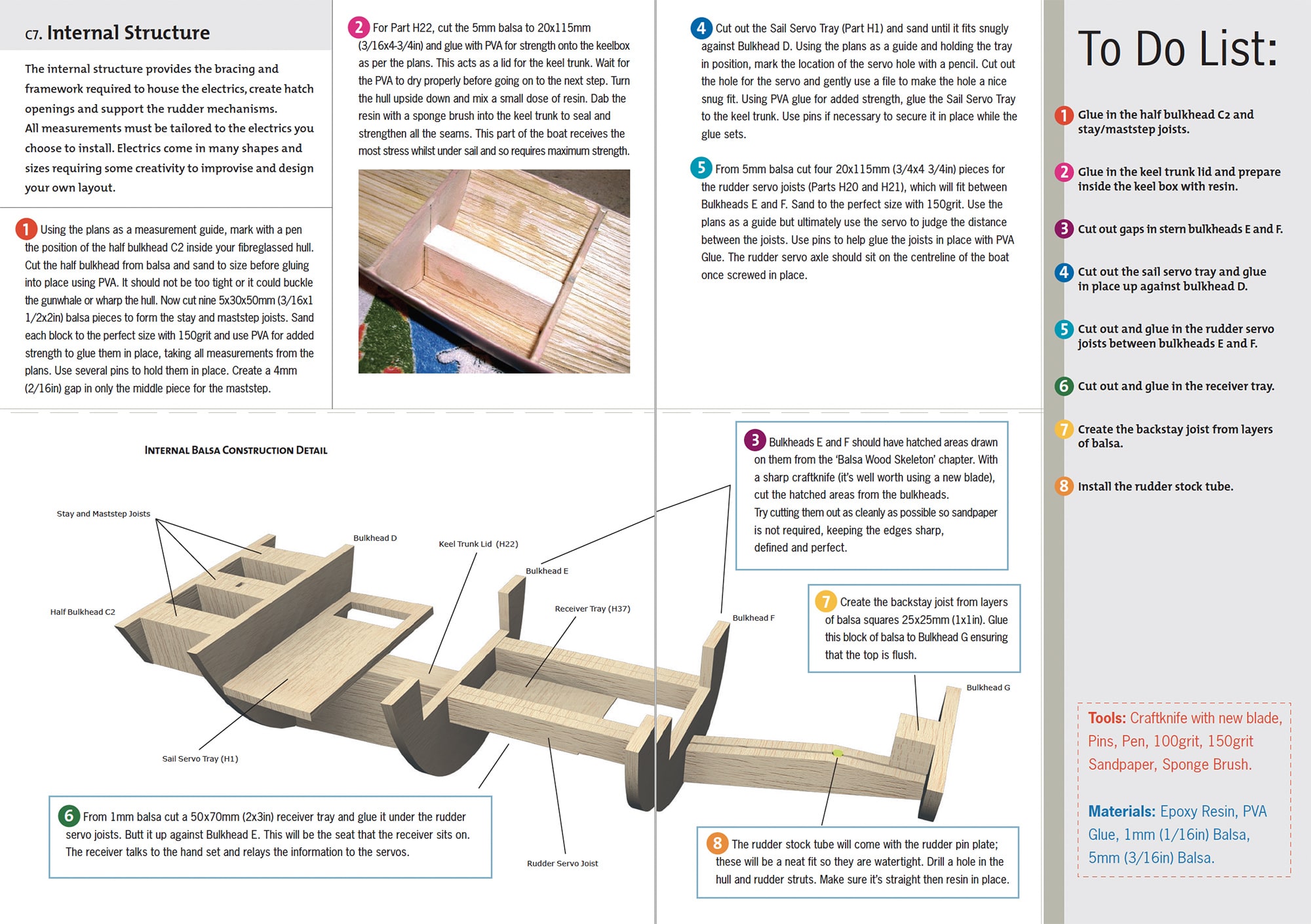
Racing Sparrow blog
We share tips and stories from the model boat building community. See all Blog Posts.
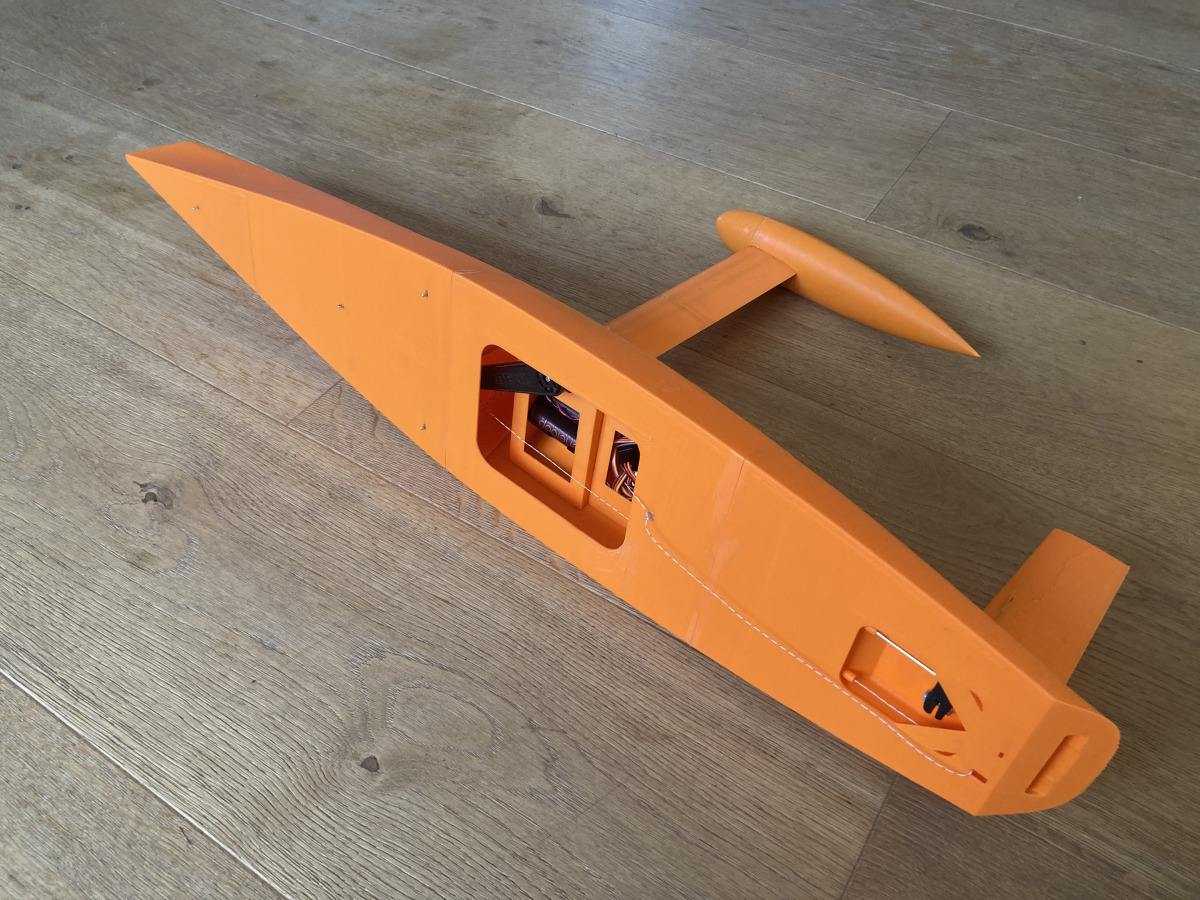
A 3D Printed Racing Sparrow!
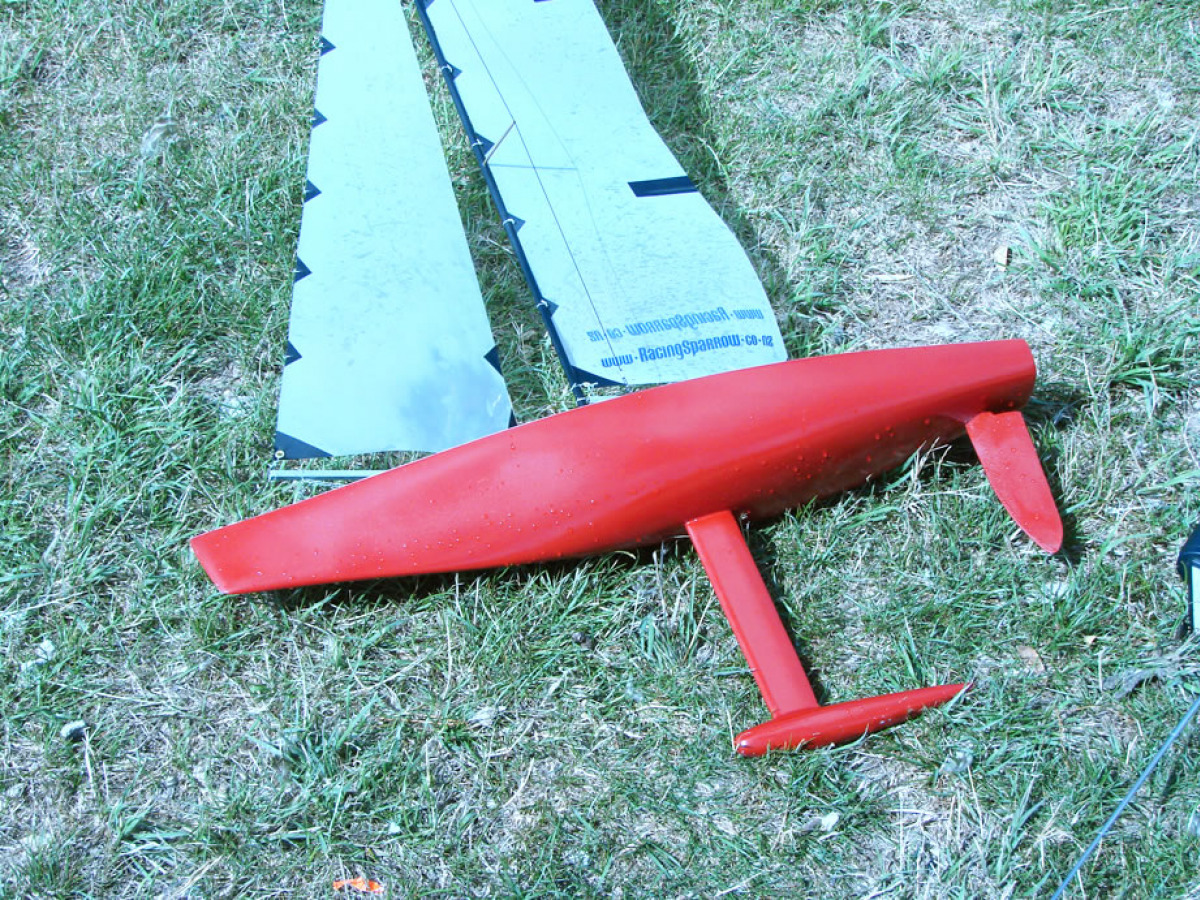
The Design Rationale for the RacingSparrow 750
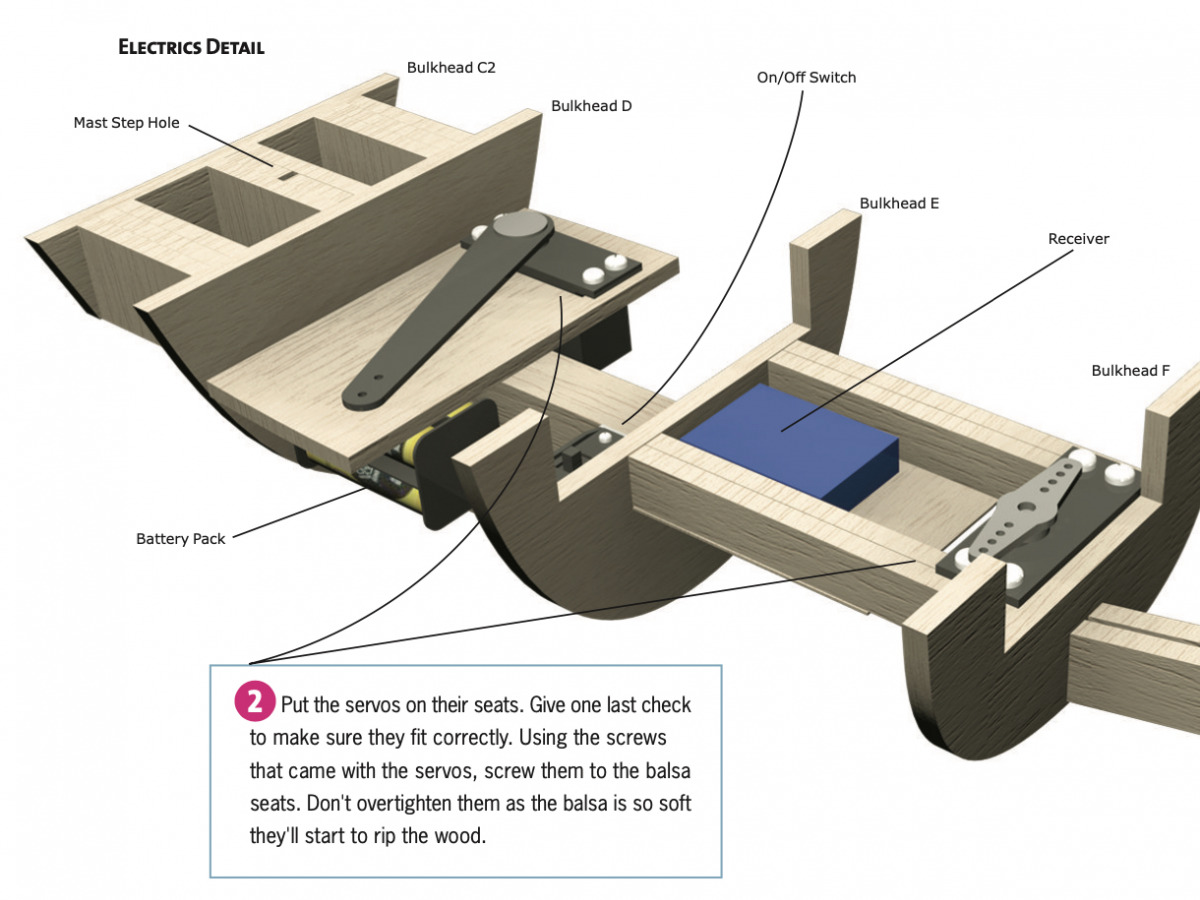
Radio Controlled Yacht Electrics - For Beginners
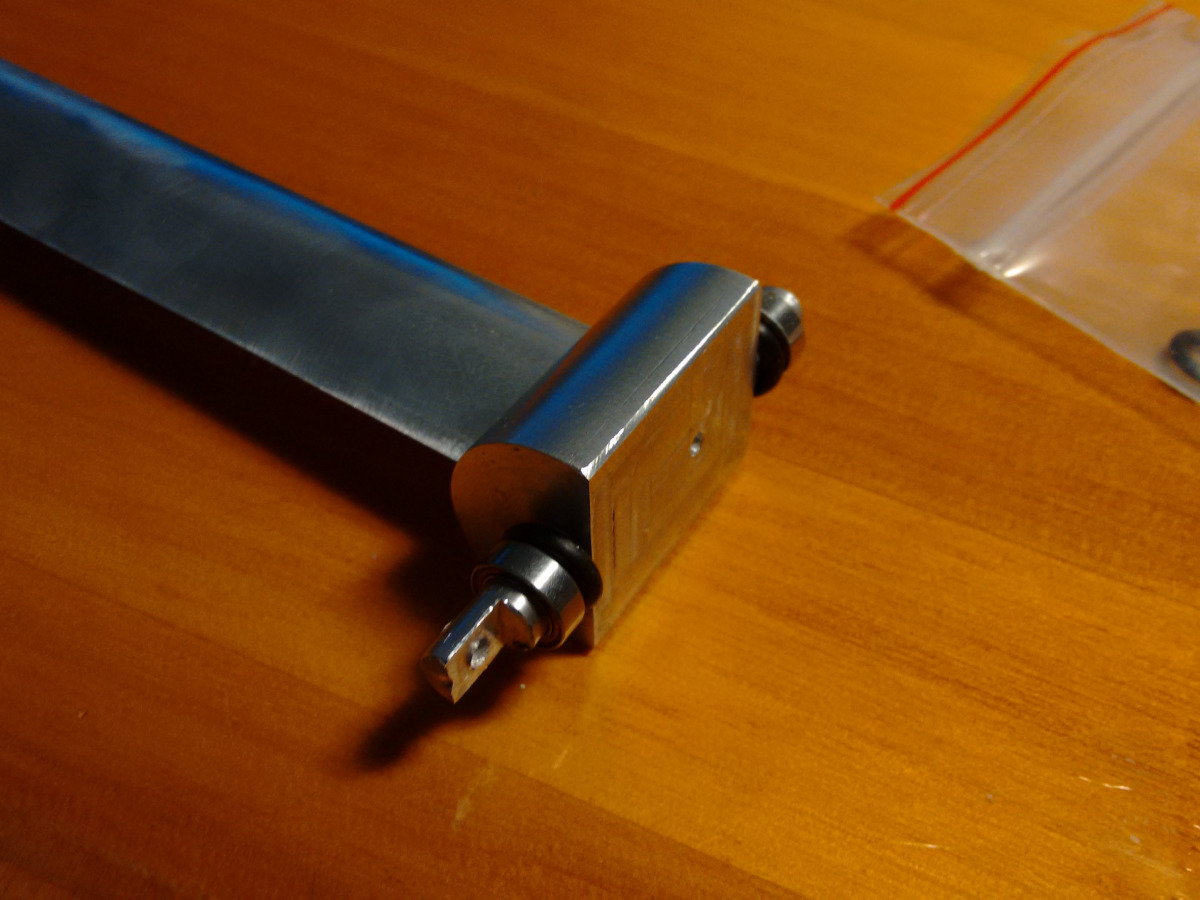
Model Yacht Design: Pushing the Limits with Racing Sparrow
Free model boat plans.
We provide a number of different boat plans that you can build using techniques covered in our full eBook.
You can download plans for boats of different sizes and specifications.
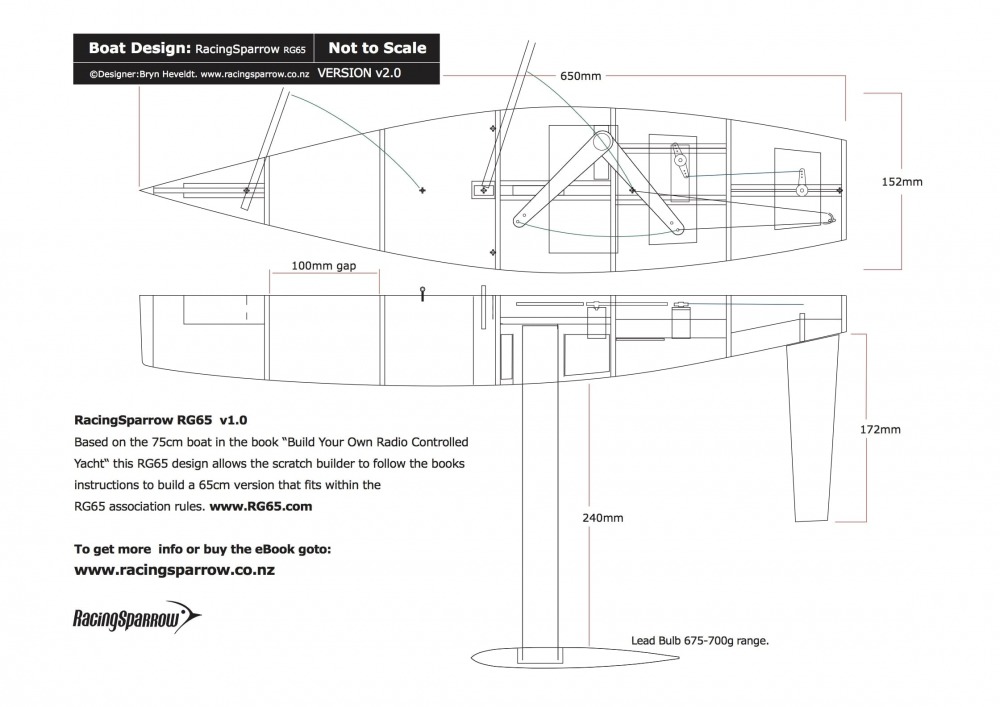
What our customers say about Racing Sparrow
Being a complete novice, I purchased your book a couple of years ago and built two racing sparrows. Building on this experience I then went on to build, from scratch, an IOM (Triple Crown design). I've since joined a local club and sail virtually every weekend. I would just like to thank you for your endeavours which have allowed me to enter a world I never thought was in my reach.
John Sterland, Australia
Coming upon your book, "Build your own Radio Controlled Yacht" in the Napier Public Library, I am hugely impressed. The combination of your superb photos and illustrations with your easy writing style make it a standout publication and I hope it does well for you.
Richard Spence, New Zealand
Thanks for an excellent design in your RG65. I trialled her again today in a solid 20 knots gusting higher. Even so in a steep chop and fingers off the rudder she drove upwind remarkably well, balanced perfectly. Very impressed that a model boat can handle that with a large rig. I found the book excellent. Ive built several big boats, plus a few skiffs and without that resource building such a good boat would have been impossible.
Mike Bennett
Boats built by the Racing Sparrow community
We continue to be amazed at the beautiful model RC boats created by Racing Sparrow enthusiasts . Send your images to info@racingsparrow.co.nz.
Take a look at the full boat gallery page. So many fine model yachts!
Peter Knox , Canterbury, New Zealand
Apr 30, 2008

Fanie Nel - RS750 , Krugerdorp, South Africa
Apr 5, 2023

Geoff Lewis , Isle of Wight
Sep 22, 2009

John Goodyear , England
Mar 20, 2009

More about Racing Sparrow
When I was nine years old my father, Ross Heveldt taught me to sail down at Bucklands Beach in Auckland. My wee optimist dinghy was called 'The Racing Sparrow', the nickname my uncle Bruce Curry gave to me when I was a small boy. Apparently I had an abundance of energy.
I studied at Whanganui School of Design and have been a designer / developer since 1998. I live in New Zealand.
Best wishes and happy sailing, Bryn Heveldt.
To contact me please email: info@racingsparrow.co.nz
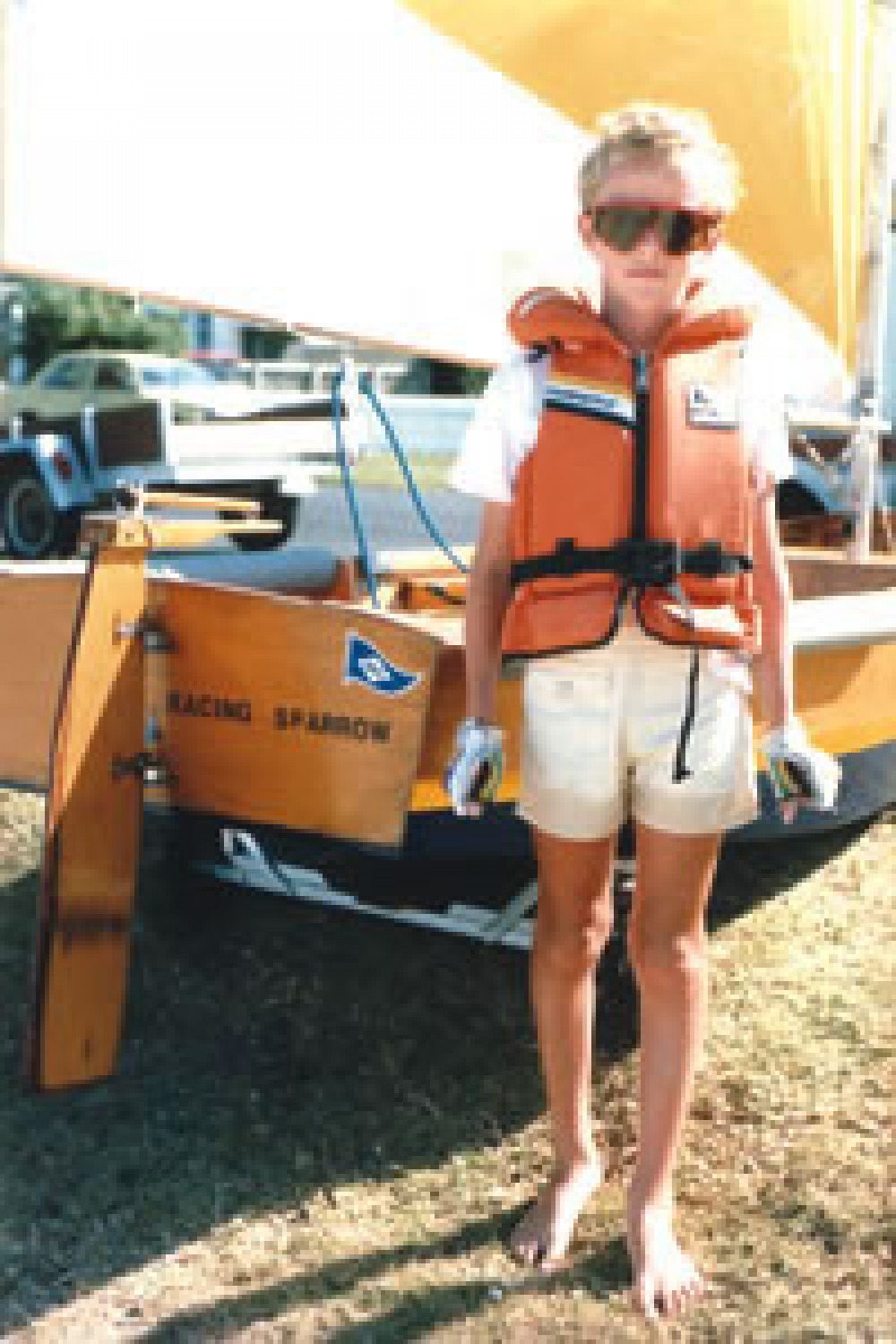

A Guide on How to Make Your Own RC Boat
This down-to-earth guide is for anyone who wants to know how to make a RC boat . It explains what parts, tools, and steps you need to follow to create your model. It’s much easier than most people think it is with an orderly approach. The first step is to decide what type of boat you want to build. The following sections break down the different boat types for consideration.
Before You Build Your RC Boat
There are several considerations before you choose an RC boat. First, you need to decide what type of vessel you want to construct. Next, is the type of hull, and then the power system. Let’s walk through each of these so that you can make well-informed decisions.
The three types of RC boats are:
- Scale boats
- Racing boats
Try to avoid anything that’s too difficult if you’re new. There’s plenty of time for complex models later.
#1 Scale RC Boats
An RC scale boat replicates a real-world vessel as much as possible—only smaller. There is no fixed scale. The finished model can be palm-sized or so big you need a trailer to transport it. It’s the close attention to details that gives these mockups their wow factor. RC modelers can build scale boats from kits or scratch, hence the term scratch building. More on that later.
#2 RC Racing Boats
RC racing vessels can be sailboats or speedboats (powerboats). These models are fast and agile on the water and used for fun or serious competitions. Your boat choice depends on purpose and expectations. Racing boats fall into categories based on their power systems and type of hull. Some racers are only for smooth surfaces whereas others can ride the waves on choppier waters.
#3 RC Sailboats
Fans of radio-controlled sailboats make them for racing or leisure. It’s the latter that appeals most to those at the entry-level. The designs can be simple, which makes them great projects for novice builders. These wind-powered vessels typically have one or two sails controlled by winch servos. A second servo controls the steering and drop-keels (retractable fins) for extra stability.
OK, so that’s the three popular types of RC boats to build. There are many sub-categories to each, but at least you have a starting point. Again, keep designs simple if it’s your first project.
Types of RC Boat Hull
Now let’s look at the four hull types. It’s important to know about hulls and how they work. The idea is to choose one based on your experience level and the kind of water you intend to drive or sail on.
The 4 RC boat hull types include the following:
- Hydroplanes or hydro
- Monoplanes, also mono or V hulls
- Catamarans or cat
- Tunnel hulls
#1 Hydroplane Hull
The hydroplane hull is made for speed, typically on flat water, and thus suited for racing RC boats. They’re fast, agile, and able to make tight turns. This type of hull is best suited for advanced users. Below is an example of a ready to run (RTR) preassembled hydroplane to illustrate.
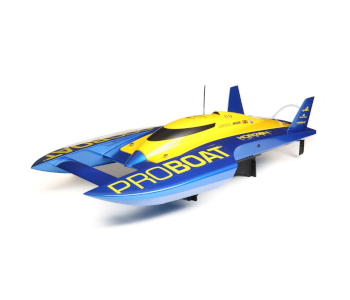
Pro Boat UL-19 RTR Brushless Powered Hydroplane
#2 Monoplane Hull
Monoplanes are the right choice for driving boats on choppy water and over waves. They’re fast too, though not as fast as hydroplanes. These are V-shaped hulls that can be either deep or shallow. The stability of a deep-V design makes them a much better choice for newbie racers. Below is an example of a ready to run (RTR) preassembled deep-V monoplane to illustrate.

Pro Boat Stealthwake RTR Brushed Powered Deep-V
#3 Catamaran Hull
Real-world catamaran or cat hull designs are typically for off-shore race boats. They have two outer projections called sponsons and a tunnel through the center. These hulls are faster and handle better than other types. Cats are an ideal choice for rough water because of the extra stability. The downside for that added stability is an increase in drag.
Below is an example of a ready to run (RTR) preassembled catamaran to illustrate.
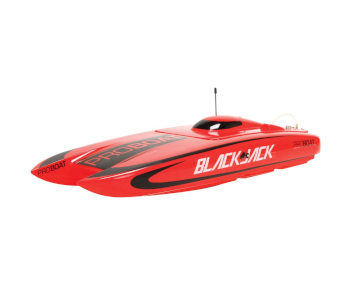
Pro Boat Blackjack RTR Brushless Powered Catamaran
#4 Tunnel hulls
Tunnel hulls are the slowest of the four but still nippy. They do handle well and are the perfect choice for driving on shallower water. These types of boats have two planing hulls that allow the craft to rise upward and glide or skim over the surface. The tunnel hull design has a solid center that traps air. Below is an example of a ready to run (RTR) preassembled F1 Tunnel hull powerboat to illustrate.
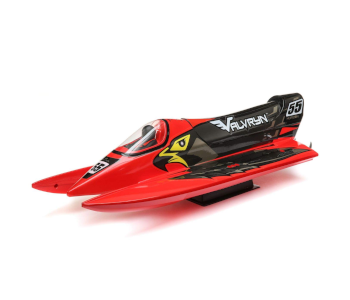
Pro Boat Valvryn RTR F1 Self-Righting Tunnel Hull Powerboat
RC Boat Power Source Options
Next, we need to look at ways to power your new RC boat. There are three options here, namely:
- Electric power (battery)
- Nitro power
#1 Electric Powered RC Boats
Battery power is the most common fuel source. It’s also the cleanest and needs little maintenance. Electric-powered R/C boat motors are much faster than they used to be. They also enjoy better run times and quicker charging than earlier models. Battery power is quieter than gas too, and that allows more choices on where you can play. It’s wise for newbie RC boat builders to opt for electric.
#2 Nitro Powered RC Boats
Nitro powered RC boats are driven by something called a glow engine and a special fuel mixture. The fuel uses a blend of nitro-methane, methanol, and oil, usually the castor variety. The mix ratio varies depending on the engine. Nitro boats are quite fast and well-protected from water thanks to a hydrostatic lock. These engines produce realist sounds and smoke.
Nitro-fueled engines are an excellent choice if you love to tinker, but terrible if you don’t. They need lots of tuning and regular maintenance. The engines are also very loud compared to electric.
#3 Gas Powered RC Boats
Gas-powered RC boats are big and powerful, but they’re also incredibly noisy. Using gas for a model rewards it with long running times on a full tank of fuel. However, it can be a messy business, and the engines do need regular maintenance. They’re easy to operate once set up, though, and they require less tuning that nitro. Powerful gas engines are also useful for driving on rough water.
The rest of this guide looks at the logical steps on how to make an RC boat.
RC Boat Kits Vs. Scratch Building
RC boat kits are an excellent choice for the raw novice as they’re the jigsaws of the modeling world. Everything you need to build the boat structure is in the box. A decent kit should come with detailed instructions. It shows you how to construct the model using steps and illustrations. Look for user reviews if you’re not sure. Some kits have vague instructions or suffer from poor translations.
Look for helpful online video tutorials instead if the instructions are bad. YouTube is the best place, but there may be others. Kits are not so easy to find for RC boats, and the choices are few compared to scratch building plans. Another option is to learn to build by the kit-bashing route (see next)
The Kit (Model) Bashing Route
Kit-bashing is an excellent progression toward scratch building. It works by creating an RC boat using the parts and components from commercial kits. The idea is to create a unique RC model boat from these pieces or use them to customize an existing project. The bashing approach is hands on. It teaches you all about scale modeling in a fun and enjoyable way.
Consider kit-bashing if you’re an RC fan who happens to have a bunch of spare parts sitting in boxes. RC enthusiasts are usually reluctant to throw stuff out with old or broken models. Ask others if they can donate some parts if you’re a total newbie.
Below are a few books to consider on RC model boat building, upgrades, and maintenance.
Building and Racing Radio Control Sailboats
EDITOR’S RATING: 4.8/5
This book makes an enjoyable read for anyone into radio control sailing. It uses a step-by-step format to show the reader how to get started. There are chapters on selecting a model sailboat; building from kits, and scratch building. It also shows how to install radio systems, sails, and winches, etc. It’s not a cheap book, but it will last you a lifetime once you have it.
Electric RC Boat Upgrade & Maintenance
EDITOR’S RATING: 4.7/5
A boat builder’s job is never finished. Enthusiasts love to tweak and tinker their models, and that means upgrades and maintenance. This book is for beginner to intermediate level RC’ers.
Model YACHT Construction and Sailing – Made Cheap and Easy!
EDITOR’S RATING: 4.4/5
This is a fun book aimed at folks who are not yet sure whether they want to build an RC boat or not. It gives step-by-step illustrated instructions on how to make a micro-sized RC sailing yacht. The entire process uses household tools and shouldn’t cost much more than ten dollars.
The Beauty of Scratch Building
RC boat kits have their place, but most beginners use them as stepping stones to scratch building. After all, a kit is not unique to you, but a custom model built from scratch most definitely is.
Scratch building is the way forward if you have the time and patience. There are many boat plans and blueprints around for free download or a nominal fee. Building an RC boat from scratch gives you total freedom to be as creative as you want. That means you can produce a model that no one else has. It can save you money too, but it can also take a long time depending on the model and modeler.
Where to Find RC Boat Plans
Below are examples of the type of RC boat plans and building formats available. Join an RC forum and ask for help if you can’t find the plans you want via the search engines.
RC Groups Forums
RC model building is a social pastime where people swap ideas, give advice, and share tips. The RCGroups forum is an excellent place for all the above. You can browse for free, but you need to join to search. There are many threads (discussions) on this site for RC boat plans and RC building.
Plans to Make an Easy & Fast RC Boat!
This site has downloadable RC speedboat plans. It also has 19 online stepped instructions on how to build the boat. Everything is on one scrollable page with large photos to support the text. There’s a discussion going on at the end of the page with some useful feedback from visitors.
RC Cabin Cruiser Plans
These plans are ideal for entry-level scratch builders. The boat is mostly balsa wood, and the tools needed to construct the model are basic. The cost at the time of writing was around $8.
Electric Ski Cruiser
These plans are for Build a radio control electric racing boat. They include notes and full-sized printed plans. It’s a personal project, but you’re free to modify the plans and tweak the model as you wish.
The Right Tools for the Job
Make sure you have the right precision tools to build your RC boat. Proper tools make the work so much easier and more enjoyable. The wrong tools make the job frustrating, and you risk damaging the model or yourself. There are plenty of decent kits at reasonable prices. Look at what you already have, and then make a list of what you need extra.
The examples below show basic, intermediate, and pro-level options, though there are many others. Try not to skimp here as high-quality tools will last a lifetime.
Rustark 9 Piece Gundam Model Toolset | Basic Kit

EDITOR’S RATING: 4.5/5
The Rustark 9 piece Gundam model toolset is a basic kit that costs only a few dollars. It’s a lightweight kit that comes with a plastic storage box. The tools include:
- 1 x side pliers
- 1 x manual model tools file
- 1 x penknife
- 5 x spare blades
- 1 polishing cloth
- 2 x double-sided polished bar
- 2 x tweezers
Remember, this is only a starter pack that doesn’t cost much money. You may want to invest in the higher-quality, more comprehensive toolkit if you decide to embrace RC boat building.
Hobbypark 11-in-1 Pro RC Box Set Tools | Intermediate Kit
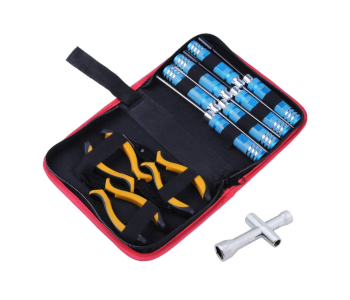
The Hobbypark 11-in-1 Pro Box Set contains some essential tools for RC model builders. The high-performance metal used is durable and long-lasting. This set includes the following items:
- 1 x hex screwdriver 1.5mm
- 1 x hex screwdriver 2.0mm
- 1 x hex screwdriver 2.5mm
- 1 x box spanner 4.0mm
- 1 x box spanner 5.5mm
- 1 x Philips screwdriver 0#+
- 1 x slot screwdriver 1#-
- 1 x pliers (needle-nose)
- 1 x pliers (diagonal)
- 1 x Pliers (ball link)
- 1 x Hexagon Sleeve Wrench (4/5/5.5/7mm)
This kit is ideal for building, maintenance, and repair. It doesn’t include saws or drill bits, though.
X-ACTO Hobbytool Set Deluxe 30 Piece Set | Pro Kit
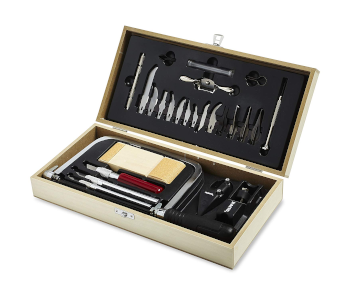
The X-ACTO Hobbytool is a 30 piece, high-quality modelers toolkit. It has precision tools to saw, whittle, cut, and carve a variety of materials. The set includes the following items:
- 3 x X-ACTO knives: #1/2/5
- 11 x X-ACTO blades: #2, 7/11/13/16/17/19/22/24/26/28
- 1 x jeweler’s screwdriver
- 1 x block plane
- 1 x block sander
- 1 x spokeshave
- 1 x balsa stripper
- 2 x routers
- 1 x pin vise
- 3 x drill bits
- 1 x coping saw (includes blade)
- 1 x wood storage box
These are three examples of the toolkits available, but there are many others. It can be hard for the first-time builder to know what they need for their radio control model. Proper preparation makes everything so much easier, so ask in RC forums if you need some guidance.

Other Tools to Consider
There are a few other tools to consider. A building board to lay your plans on, to work, and organize parts as you build is essential. This board is not your workbench—it goes on top of it. The board can be whatever size and material works best for you, and you can make your own or buy a purpose product. Again, seek help from fellow modelers if you’re unsure.
You may need electrical devices depending on the type of boat you build. There are various other things too. Here’s a breakdown of some potential tools and items to consider.
| Building board | | |
Most homes will at least have some of the tools needed for RC model boat building. Find out what you need extra and get everything prepared before you start to build.
How to Build Your Firsts RC Boat
I use a basic RC vessel here to illustrate the building basics. It’s a broad approach and doesn’t refer to any particular model. The principles are similar for most boat building. Despite that, size, complexity, and skill level will differ between projects. The model below is a simplistic electric-powered vessel. I base this example on sourced parts, so there are no tutorials on how to make individual pieces.
The parts of your RC boat from rear (R) middle (M) to front (F) are:
- Servo horn (R) servo rod (R–M) servo (M)
- Battery (R)
- Receiver (F)
OK, now let’s look at how it all goes together.
Choose the Hull
The hull of your boat is what everything else works around. You may want to make one or buy a ready-made product that fits your design. Either way, choose a hull right at the start of the project. Refer to the ‘types of hull’ section if you need a recap.
The Electronics
The hull and electronics are the most expensive items on an RC boat builders list. Despite that, they don’t have to cost the earth, especially if you start with a toy-grade project. The electronics include:
- Rechargeable battery
- Battery charger
- Radio system (transmitter/receiver)
Attach the motor
The motor goes at the bottom rear of the model boat, usually under where the battery sits. Fix it in place using purpose modeling glue and then attach the prop.
Waterproof the boat’s openings
It’s time to waterproof the boat’s opening (hatch). It’s a vital step as water always finds a way in if there is one. There are different approaches to this, and no two boats are the same. However, the favorite way is to build a wall around the opening. It’s what we call ‘coaming’ in the RC world, and it’s a raised edge that surrounds the open hatch.
Balsa strips work well for coaming—which must be slightly proud of the boat’s deck. You can then build a simple removable hatch to seal the opening. Model boat builders use all kinds of creative ways to seal the openings. Seek help on one of the forums if you need guidance.
Attach the steering servo
Servos come in many different shapes, weights, and sizes, but they all work the same basic way. A servo’s arm should correspond precisely with the transmitter’s stick or slider movements. The servo is necessary for steering your RC vessel, and it goes in the hull towards the front of the boat.
There are various ways to install the servo into the hull. The three most common are:
- Double-sided tape
- Glue directly to the bottom of the hull
- Glue wood blocks inside the hull and screw the servo to the blocks
The first two options are okay if you build a cheap, toy-grade product as a first experiment. Option 3 is a better approach for costlier, high-powered boats. You can also make a purpose servo mount with brackets and screws for added security. This way you can access and remove the servo easily should you need to replace or maintain it.
Attach the boat’s rudder
You can make the boat’s rudder or buy one. You must take it apart to install it if you purchased a rudder assembly. Make a note of the parts and how they go together as you strip it down.
The rudder goes at the back of the boat, fastened outside its hull. You need to drill a hole for the rudder tube on the model’s center line just behind the prop. The trick here is to use a drill bit that’s only slightly larger than the pipe. This is where your precision tools come in handy. Here are the remaining steps assuming the above went as planned.
- Place the servo horn on the top of the rudder tube
- Use a screw to secure the servo horn
- Attach the servo rod with Z-bends at both ends
That’s it. Your rudder assembly should now be in place and ready to go.
Attach the battery pack
You model RC boat is now ready for its battery pack, and there are two main options here. One is to glue the rechargeable battery to the bottom of the boat’s hull. The downside to gluing is that the battery becomes fixed. That means you must wait for it to charge before you can use the boat again.
Velcro is a better method if you want to be able to swap batteries over. Glue one piece of quality Velcro to the bottom of the hull and the other to the battery. Space might be tight, so make sure the servo rod doesn’t make contact. Now connect the battery cable to the power plug.
Attach the receiver
Now it’s time to glue the receiver into place. It goes at the front (the bow) of the boat.
Seal the boat
You can waterproof your RC boat using various sealants depending on the material used. Some modelers like to waterproof the inside and outside to be extra safe. For wood hulls, Z-Poxy Finishing Resin Adhesive is a popular choice. ABS hulls do better with a clear waterproof silicone like DAP . Ask on forums if you’re unsure, and let others know some details about your boat and its materials.
Good luck with your next project.
Leave a Reply Cancel reply
Your email address will not be published. Required fields are marked *
Sign me up for the newsletter!
RC Sailboats
An overview of radio controlled sail boats and a brief explanation of scale model sailboats, semi scale rc sport, and rc racing sailing yachts. kits, rtr and scratch built..
RC sailboats can be divided up in three main categories:
- RC Sport Sail
- RC Sailing Yachts (for racing)
- RC Scale Sail
RC sport sail
Most kits and RTR (ready-to-run) model RC sail boats are best categorized as RC sport scale. This category is a happy medium between full-blown scale models and RC racing yachts.
Some have become so widely distributed that new racing classes has been formed around them. Good examples are Graupner's Micro Magic and Kyosho's Fairwind.
They are usually semi-scale of modern cruising yachts or made to resemble America’s cup sailboats.
The lower cost models come with ABS hulls, whereas the higher end models come with more durable fiberglass hulls. Drop keels, aluminum masts and Dacron sails are most common.
RC racing yachts
If you want to get into RC yacht racing there are a number of classes to choose from. Each country has a governing body ( American Model Yachting Association (AMYA) in the USA, Model Yachting Association in the UK) under the International Model Yacht Racing Union.
As with full size regattas, RC model yacht racing face some of the same issues. Entry rules for competitions typically follow depending on if the class is Open or Closed Design.
Open or Construction Class
What these classes have in common is that the boats are not identical - instead the rules are made up like a mathematical formula. The good thing that brings is that the challenge is three-fold – design, construction and sailing the course.
The disadvantage is in that the rules for some classes can be complicated. Some classes have gained in popularity precisely because the rules fro previously established classes were so hard to understand.
Examples of some popular open design model yacht classes:
- 6 Metre - M6R
- 10 rater – R10r
- 36" (36-inch)
Closed Design or One-design Class
All entries have to be the same design. Some are kits from a single manufacturer others are open to home built model boats.
- Soling 1 Meter
- Micro Magic - Graupner
- Fairwind - Kyosho
RC scale sail
We're talking about scale model sail boats that actually use its sails as the main means of propulsion. RC scale sail is called minisail in continental Europe. The vast majority of sailing scale model boats is scratch built. There are a few kits - Billings Collin Archer RS-1 comes to mind.
The prevailing problem with scaling a sailboat is that stability doesn’t scale linearly with size. The result is that model boats will always be significantly less stable than the boat or ship it was modeled after. Left as is, it may have detrimental effects on the model’s sea keeping abilities. There are ways to minimize the effect.
A smallish boat built to a large scale is more stable than a large ship to a small scale. For instance, say you can only transport a model 1m long. Building a model of an 8m cruising yacht at 1:8 scale will be more stable than a model of the USS Constitution at 1:48 scale. This is true even if they end up weighing the same and being the same length. I bet the yacht will be a much better sailer too.
Bigger is always better too, when it comes to scale RC sailboats. Try and build the biggest model you can get away with. A larger model will be more forgiving on construction techniques, materials and the weight of components. The finished model will also be faster, a better sailer and handle stronger winds than if it was built smaller.
Making considerable effort to build light is always a god habit. The higher up a part or component is located, the more important this becomes. For instance, rigging components need to be light weight.
Other factors are beam and draft (width and depth for landlubbers). A wider and deeper hull will naturally be more stable than thin and shallow.
There are two tricks to increase the stability of model boats artificially:
Add a drop keel
By adding a drop keel you can bring the center of gravity down while adding profile area. The greater under-water profile helps against drifting sideways. All sailboats drift downwind some, because the surface water moves with the wind. The lower boundary-layers of a body of water are influenced less by the wind than layers closer to the surface. Therefore, the deeper any extension of the hull is, the less drift.
Typically a boat with a drop-keel also needs a larger rudder. A good guideline is to make the rudder area 10-12% of the total submerged hull profile.
Extent the hull below the waterline
Some builders rather build the boat hull slightly out of scale than add a drop keel. The most bang-for-the-buck is to deepen the hull. Same rule apply about the rudder (rudder area = 10-12% of total submerged profile). You could technically make the hull wider, but the effect is not as great.
Any change in the submerged hull profile need to maintain the same geometric center to balance the center of effort on the sails. Naturally, if you know what you are doing, the sail and rig can be modified also.
A Final Word on Scale RC Sailboats
Generally stay away from lateen rigs, multi-hull, centerboard designs and square riggers, at least until you have become an experienced RC sailboats captain and/or builder.
Return from RC Sailboats to Radio Controlled Boats
Return to Homepage
| Facebook Twitter |
Would you prefer to share this page with others by linking to it?
- Click on the HTML link code below.
- Copy and paste it, adding a note of your own, into your blog, a Web page, forums, a blog comment, your Facebook account, or anywhere that someone would find this page valuable.
- Plans Store
- Model Boat Books
- Model Boats Intro
- Building Materials
- Make a Hull
- Plastic Kits
Radio Control
- US Battleships
- Torpedo Boats
- Model Boats Q&A
- Model Ship Gallery
- What's New?
- Privacy Policy

By Petter Blix
Copyright 2009-2018 Building-Model-Boats.com
Trademarks belong to their respective owners
All Rights Reserved
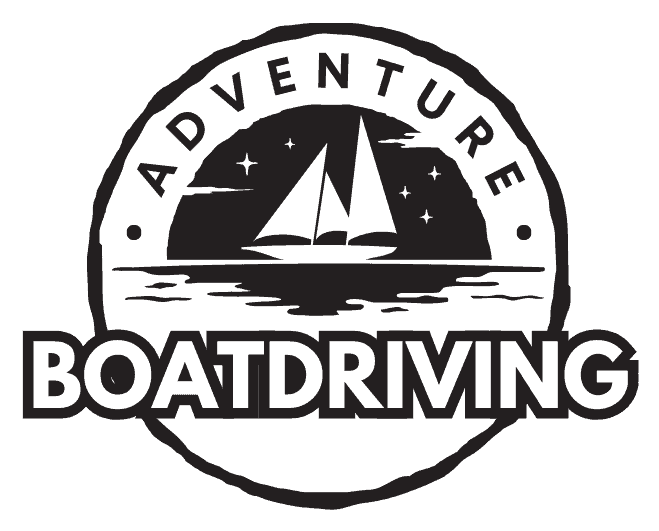
17 Homemade RC Boat Plans You Can DIY Easily
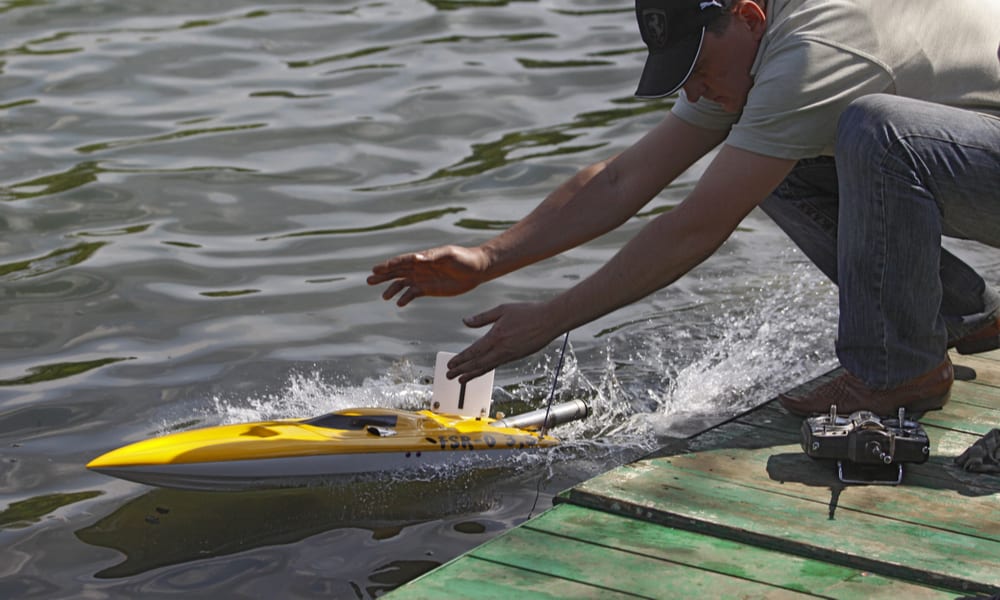
DIYing an RC boat can seem a bit scary at first, especially if you’re a DIY noob. But if you have a proper plan, tutorial, and a basic grasp on electronics, building an RC boat is a great DIY fun project for weekends.
Be it for making your kids happy or pleasing your inner boat-fanatic child, here we’ve collected 17 best DIY RC boat ideas available on the internet for you. From a simple foam RC boat to an impressive supply boat, we’ve covered it all! Let’s begin!
Table of Contents
1. How To Make Fast Twin Motor RC Boat. Diy Foam Model Boat
2. rc boat, 3. how to make a boat – amazing rc diy toys – boat, 4. a guide on how to make your own rc boat, 5. build an rc rigger boat | pro boat mini outrigger build pt.1 hardware & electronics install, 6. how to make a homemade remote control boat, 7. how to make a big rc boat, 8. how to make a rc boat trailer [5 easy steps], 9. making big rc yacht boat with foam, 10. how to make an rc boat out of an rc car: a step-by-step guide, 11. how to make remote control boat at home, 12. build a simple rc boat hull, 13. how to make fast rc boat. diy single motor rc boat, 14. how to make an rc boat with brushed dc motor : introduction, 15. build a big rc bait boat – v2, 16. build a simple arduino rc boat that can be controlled wirelessly using 433 mhz rf modules, 17. rc supply boat build build from scratch.
No chitter-chatters; straightforward to the tutorial! All the supplies of this video tutorial by KendinYap are mentioned in the description box, and all the dimensions are clearly displayed in the video itself.
With proper tools and supplies, even a beginner can follow along with this tutorial. The comment section is filled with encouraging adjectives ‘nice’, ‘great’, ‘awesome’, ‘cool’, and so on. Make sure you check this tutorial out. You won’t regret it!
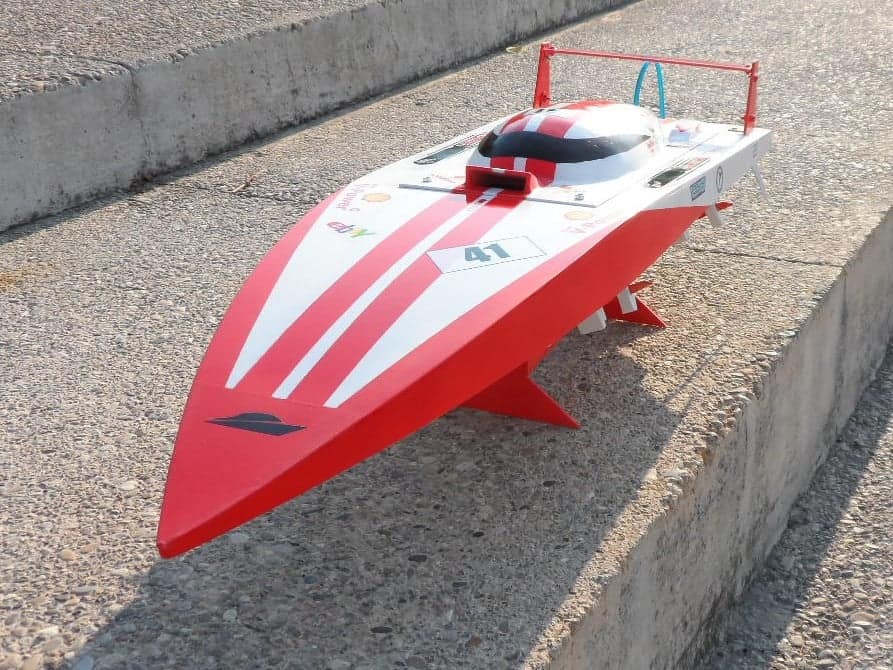
Francisco Molliner from Instructables guides you through the process of building an RC boat in 19 steps in this blog post. The downloadable plan for the DIY project is listed in section 1, and all the materials you need are listed in section 2 of the post.
Not only has the blogger elaborated all the steps, but he also has shared several great tips throughout the blog.
Check More Details
Replicate the RC boat design by Make Your OWN Creation in order to DIY a fantastic RC boat for yourself. All the supplies and purchase links to them are mentioned in the description box.
If you plan on going forward with this tutorial, make sure to check the comment section as it is filled with positive feedback. For instance, Neil Crompton proposes that the boat would go faster if the air outlet is angled so that it is fully submerged in water.
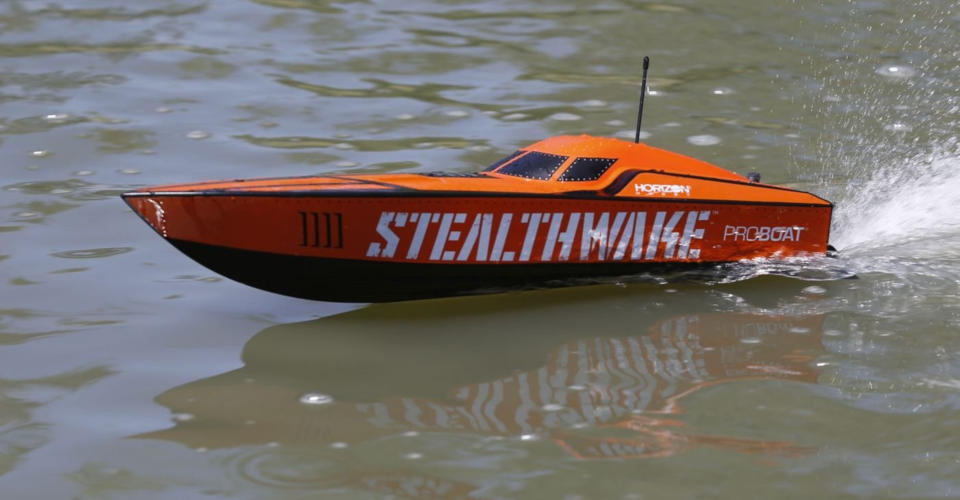
If you have never built an RC boat before, this post by 3DINSIDER is a must-read! You’ll find out RC boat types, designs, and power source options in this post.
What’s more, if you’re conflicted between buying a kit and building your RC boat from scratch., this post might help you get a better idea of which route you should take.
For your ease, they’ve rated several RC boat kits in this post and have given you a brief outline on how to build your first RC boat.
In this first part of the tutorial video by IRONCLAD RC, the Youtuber demonstrates to you how to install stuffing tubes, struts, rudder, motor mount, brushless motor, battery, and the mini servo.
Likewise, the second part of the DIY series includes a sponson setup, ride pad, adjustment, final fit, and finish of the mini FRP outrigger .
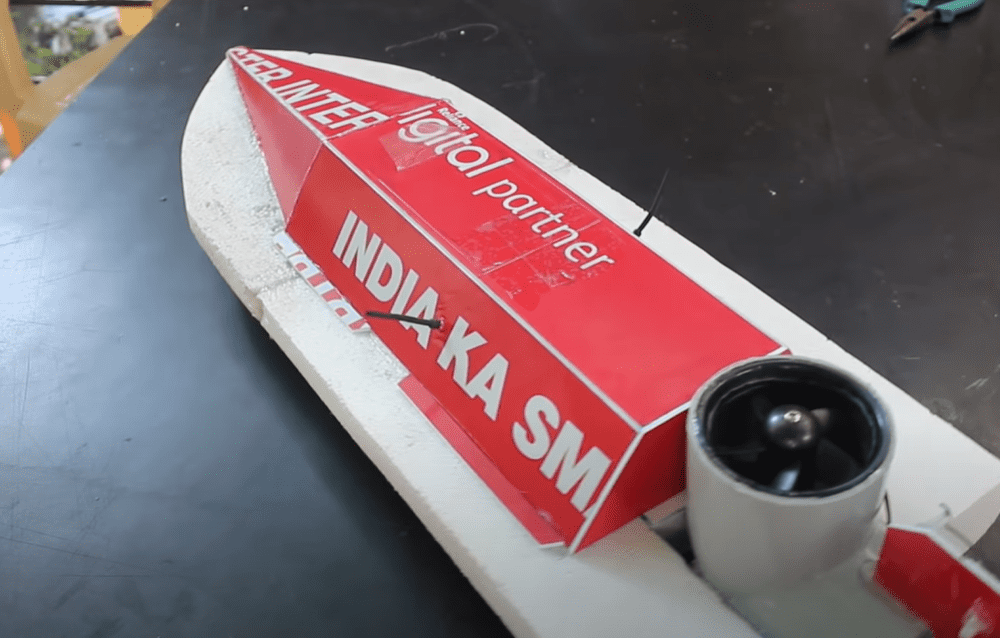
DIYs such as building an RC boat is quite complex if you’re a complete beginner in building such a project. We’re sure plenty of questions is roaming your head. For instance, how does an RC boat work? Can you convert an RC car into an RC boat?
Well, to your rescue, you can find all your answers in this post by SeniorCare2Share. Though this is not a step-by-step tutorial on how to build an RC boat , we’re certain that this blog will come in handy.
Unfortunately, this tutorial video on building a big RC Boat by CRAZY DIY is in Thai. So, only watch this tutorial if you aren’t a complete beginner and can get the hint of what the Youtuber is doing without having to explain everything.
![rc yacht design How To Make A RC Boat Trailer [5 Easy Steps]](https://www.boatdriving.org/wp-content/uploads/2022/02/How-To-Make-A-RC-Boat-Trailer-5-Easy-Steps.jpg)
Cecil Webb from RC HOBBY TIPS instructs you on how to build an RC boat trailer in 5 easy steps. He has listed all the materials and tools you will need for the project at the beginning of the post.
In the first section, he guides his viewers on making the base, followed by making a supporting front for the boat.
Then, it’s time to make fenders for the tires, make some suspension and axles, and finally finish the DIY. What’s more, there are some FAQs at the end of the post. Your queries are most probably answered there!
Learn how to make a fantastic RC yacht in this video tutorial by Julius Perdena. The DIY yacht is 63 inches in length and 11 inches in width and powered by Inrunner brushless motor with a 50A boat ESC.
You can find all the supplies, dimensions, and electronics necessary for this project listed in the description box.
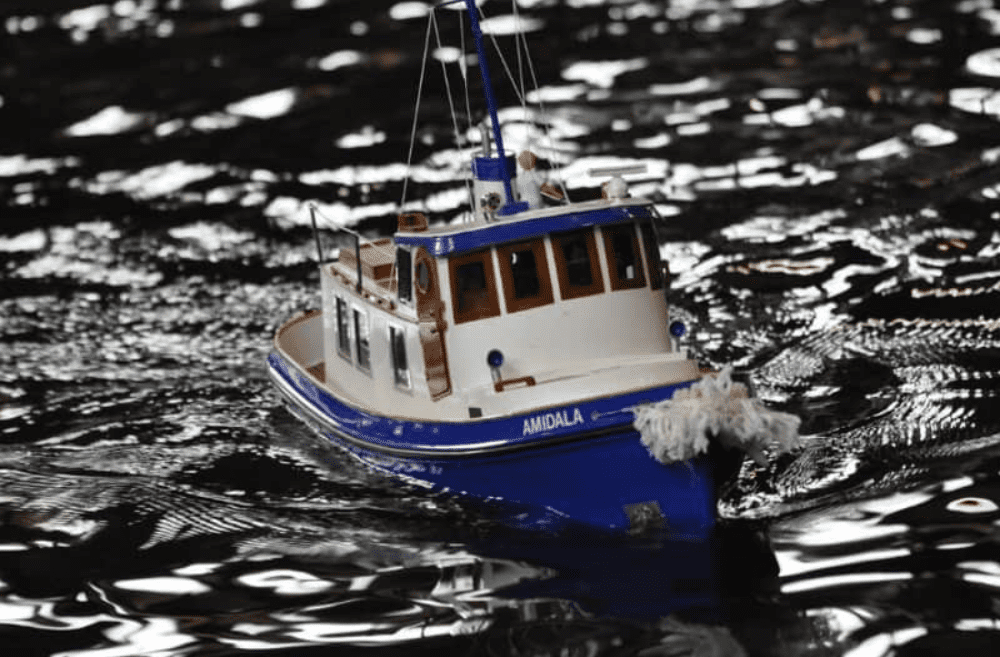
If you are bored of your RC car and are planning to convert it into an RC boat, we’ve got something for you as well! In this blog by Race N’ RCs, you’ll be guided in detail on how you can disassemble your RC car and convert it into a fabulous RC boat.
In this DIY, all you have to do is modify the battery box, DIY a styrofoam base for the RC boat, create propellers, and assemble the parts.
Do you have an old and unused RC car receiver and remote control? If yes, we’ve found the perfect DIY for you! In this video tutorial by DIY ACTIVE, the Youtuber utilizes the parts from his old RC car and a phone battery and DIYs a fantastic boat using foam.
Once you have all the supplies you need at your disposal, the tutorial is quite easy to follow along. If you’re a DIY fanatic, DIY ACTIVE has many more interesting projects for you!
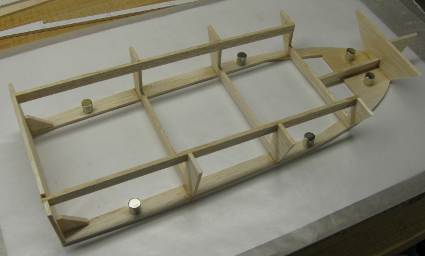
Are you planning to build your RC boat from scratch? If yes, Building Model Boats has got you covered! Download the plan shared with you at the beginning of the blog and replicate the directions as closely as possible to DIY a fabulous RC boat for yourself.
This is the first part of the RC boat build. If you find the project interesting, here’s Part 2, Part 3, Part 4, and Part 5 of the project.
Do you want to build a high-quality fast-moving RC boat? Well, if yes, KendinYap has just the tutorial for you!
All the supplies and their purchase links are mentioned in the description box. In the video, each and every step is demonstrated in great detail. It is a fantastic tutorial for beginners!
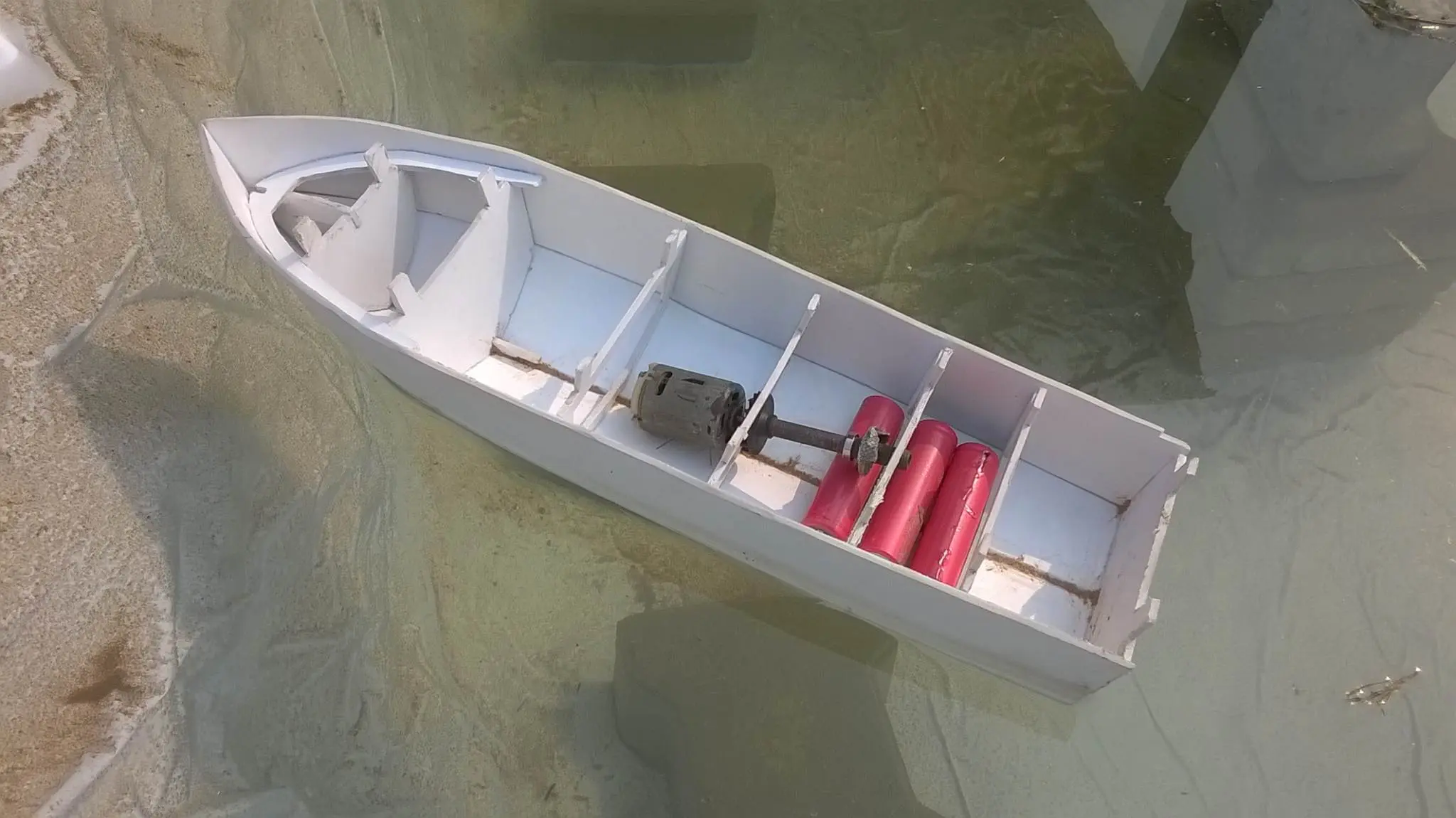
Learn how to build an RC boat propelled by a DC motor in this post by Arnab Kumar Das. The blogger has used a PVC board to DIY the boat structure and three Li-Ion 18650 cells as the power source. You can find the downloadable plan at the beginning of the blog.
All the steps are elaborated in detail using demonstrative images. Even if you’re a beginner, you will definitely be able to follow along.
If you’re into fishing, you’d absolutely love to build a bait RC boat, wouldn’t you? Luckily, Creative Channel instructs you how to.
This DIY uses 5mm plywood, DC reducer motors, a transmitter, electric wires, and a few other tools and supplies. What’s more, this tutorial is straightforward and easy to follow.
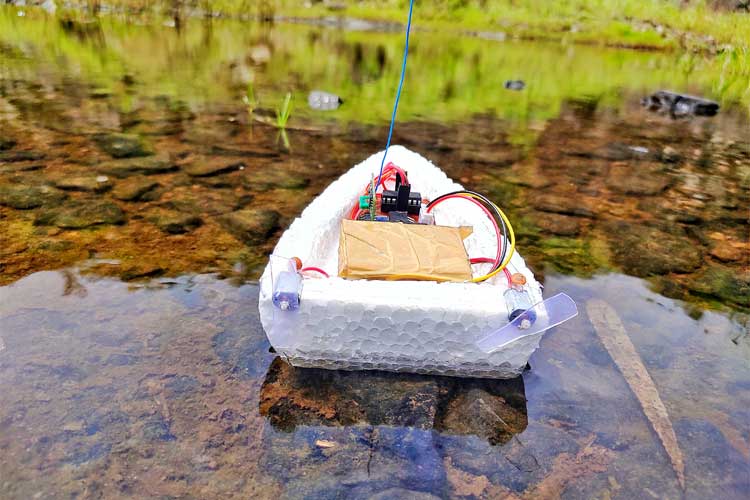
As the title suggests, this blog by Circuit Digest instructs you on building an Arduino RC boat controlled by 433 MHz RF modules.
Looking at the plan and instructions, it seems like you need to have a little grasp on electronics and programming if you want to complete this DIY successfully.
The step-by-step instructions are accompanied by demonstrative and illustrative figures for your convenience. Also, don’t forget to check out the testing and explanation video at the end of the blog.
If you want to build a slightly bigger RC supply boat , Erland Wingar-Elnes demonstrates the process in this video. From the build to the design, everything about this RC ship is stunning.
If you want to replicate this supply boat DIY, here’s Part 2, where the Youtuber tests the boat in the water.
We hope all these RC boat enthusiast bloggers and vloggers not only instruct you on the build but also motivate you actually to gather supplies for your favorite DIY plan and start on the build right away.
Do you have any queries, information, or feedback that you’d like to discuss with us? We’re all ears!
Related posts:
- 16 Homemade Boat Console Plans You Can DIY Easily
- 18 Homemade Bass Boat Plans You Can DIY Easily
- 18 Homemade Aluminum Boat Plans You Can DIY Easily
- 17 Homemade Boat Motors Plans You Can DIY Easily
Similar Posts

18 Homemade Toy Boats Plans You Can DIY Easily
Is your kid looking forward to his next watercraft science project? Or, do you want to build them a fun toy boat that floats for the best bath experience for them? Whatever be your reason, we’ve got your back! Find 18 DIY toy boat craft ideas in this post. From wooden toy boat DIYs for…

17 Homemade Boat Lift Plans You Can DIY Easily
So, you’ve finally decided to build a boat lift? Well, good for you! A boat lift can truly add invaluable years to your boat life. On the downside, it can cost you quite expensive to buy and install. But if you have faith in your handyman skill, you can DIY a boat lift for much…

17 Homemade Fishing Rod Holder For Boat Plans
If you’ve found yourself constantly complaining about how your fishing rods are kept unorganized – sometimes leaning at a wall and at times on the boat floor completely unattended, we hear you! It is a sign that you’re in desperate need of a rod holder or a rod rack if you have many fishing rods….

18 Homemade Boat Trailer Plans You Can DIY Easily
To watercraft enthusiasts, owning a boat trailer is non-negotiable. If you want to protect your invaluable crafts from harsh weather, you need to carry and store them in weather-protected facilities. And the great news is that those handy with metalworking tools don’t find it difficult to DIY a boat trailer all by themselves. So, if…

18 Homemade Boat Trailer Guides Plans You Can DIY Easily
Boat trailer guides might seem insignificant but are major life-savors when it comes to loading and launching your boat. Especially if your boating location is windy and you don’t have an extra set of hands to help you load your boat, trailer guides are non-negotiable! Luckily, boat trailer guides are cheap and easy to DIY….

27 Homemade Pontoon Boat Plans You Can DIY Easily
Pontoon boats are expensive to buy, but making one yourself can be simple and affordable, allowing you to save a whole lot of cash at the same time as tackling a highly rewarding project. For anyone who thinks they might like to have a go, we’ve had a look online to see what other people…
Leave a Reply Cancel reply
Your email address will not be published. Required fields are marked *
Save my name, email, and website in this browser for the next time I comment.
CR-914 Class Page
Cr-914 rc model sailboat, header content region, insert text, image or banner ads here, or just delete this text and leave this area blank.
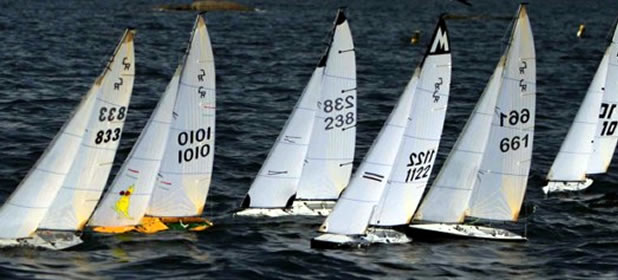
1/25 (36") Scale America's Cup high performance model sailboat
5ft Replica of the 1962 Americas Cup 12 Meter
45" Scale Model of the Olympic Star Boat
J Class Boat-Shamrock V
1/16 (8'-10')Scale Replica of the 1930's America's Cup Class Yacht
RMG Sail Winches
High Performance sail control winches

[Library/logo/wrappers/logo-wrapper.htm]
- Create as many news links as you need. News links are simple bullet lists.
This is where you would add your text, images, or advertising banner
CR-914 RADIO CONTROL MODEL SAILBOAT Easy to Build, Fun to Sail. No Better way to get Started
One of the hottest classes in the American Model Yachting Association (AMYA)
The CR-914 is a strict one design AMYA sanctioned 1:25 scale model based on the Americas Cup class yacht.
The kit comes with everything you need to build your boat. All you need are some simple tools, sandpaper, paint and batteries. Excellent sailing performance in a wide wind range. With quick acceleration and turning this boat will thrill and excite the expert as well as the novice.
CR-914 CLASS WEB SITE
| Cedar Point Marina August 19-20 |
View Kit Options Kit Accessories
BUILDERS TIPS AND TRICKS PAGE

Copyright © 2021. Chesapeake Performance Models LLC. All Rights Reserved..
RC Boat Magazine The World's Leading Radio Control Boating Magazine
Sailing 101.
Tony Phalen June 3, 2014 Boating Basics
A Basic Guide to Wind-Powered Boating
SIZE/TRANSPORT NOTES Since RC sail craft are available in many shapes that feature different mast/keel layouts, the beginner will need to first figure-out what size yacht will fit his/her lifestyle. If you have a small vehicle and limited storage space at home, a 20 to 30-inch long hull with an easily detachable mast/sails and a detachable lower keel may best suit your needs. If you choose a larger hull with an equally long mast and keel, it will take-up a lot more vehicle trunk volume; plus, more pre-sail assembly at the lake. Now if your local sailing location has any amount of submerged vegetation, a hull with a shorter-length lower keel will help prevent any weed buildup problems on the underside of the boat. As for the mast/sail layouts available, most kit/RTR boats use a two-piece mast to ease transport and the lower keel mounts in a recess in the hull bottom and it’s retained by a single thumb nut on the deck of the hull.
KIT VS. RTR Until recently the only way to start out in RC sailing would involve building a kit boat made-up from either a wood, fiberglass or molded plastic hull. Today both plastic and fiberglass RTR yachts are commonplace; so, you can now choose between constructing your first sail craft from a kit or by going with an almost-ready-to-run sailboat. If you’ve had some previous RC car/aircraft experience and have enough workspace, a sailboat kit from such companies as Victor Model Products, Thunder Tiger, Kyosho and Graupner can be built using regular hobby tools, adhesives and paints. To complete the majority of these kits you’ll only need to roundup a stick-style, two-channel surface radio with two servos, one of which will need to be a high-torque model to control the movement of the jib/main sails on the mast.
In the event you decide to go with a RTR sailboat, Pro Boat, AquaCraft and several of the kit makers listed above all sell preassembled yachts that are suitable for the novice sailor. In most cases, these RTR boats come from their boxes with only the need to install the pre-rigged mast and sails, attach the keel unit and assemble the hull’s support stand. Adding some batteries to the boat’s radio system will finish-up the yacht’s basic buildup as you can then check/trim the rudder and sail movements on the prepped hull. Once rigged at lakeside, you’ll want to make sure that all of the vessel’s mast and sail control lines are properly attached and tensioned as indicated in the owner’s manual. Then make a quick range check of the powered-up radio system to make sure that the sails and rudder run through their full range of motions. At this juncture you can launch your new sailboat and the fun of learning how to use the wind to “power” your hull can begin.
First runs: Depending on the wind’s direction across the water you’ll find that by letting out the sails (moving the left stick on the transmitter upwards) will “catch” the air and this is what’s called running downwind or with the wind. To sail in the opposite direction (towards the wind) you’ll have to steer the hull at an angle to the air which is “tacking” and this technique will have less sail extension than the downwind transmitter stick settings. If you steer the boat’s bow directly into the wind it’ll likely just sit there which is to put the yacht “in irons” and the sailor will have to let the bow swing to one side to again get air in the sails. An important factor to sailing in either wind condition is that you must have enough forward hull speed to maintain the flow of water past the rudder blade as this will allow you to turn the hull whenever needed. It will take some time to master the balance between wind speed, sail settings and hull angles to the wind; but, in only a short time the novice will be able to maneuver his/her yacht no matter which direction the air is moving.
Sail support: Like all RC activities model sailing is more fun with a group of boaters and it’s not hard to locate other sailing enthusiasts that might reside near your home. The American Model Yachting Association’s website features a nice club directory to help you pinpoint and contact fellow sailors in your area and you can also use the site to help look for any yacht hardware or racing rules that apply to your brand boat. Custom sails, servos, etc. are all found in the suppliers listing while the rules guidelines section will tell just what modifications on your hull should you decide to try your hand at sailboat racing. Many current RTR and kitted sailing hulls regularly compete throughout the country and the sport sailor can learn a lot of useful running tips from those who race the very same sail craft as the one bought by the beginner. The adaptability of most RC yachts make them fun because both the sport and competitive sailor alike can upgrade their hull’s setup to improve the boat’s on water performance and do it for only a small outlay from their RC budget.
SAIL POINTS • Always apply a drop of CA glue to each rigging cord knot to prevent any mast/sail spillage in breezy conditions.
• When rigging the hull lakeside, keep the boat out of direct winds or simply lay it on the grass to avoid a blow over.
• Remember, a setup sailboat doesn’t like to be anywhere near a running ceiling fan.
• Braided fishing line (with the same outside diameter) can be used to repair/replace any mast or sail lines.
• Be sure to take a folding chair to the lake because the average yacht can sail for a minimum of two hours.
• Since most of a sailboat’s weight is in the keel, carrying it by the lower keel will be the most stress-free way to launch/retrieve it at the lake.
LINKS Aquacraft Models aquacraftmodels.com , 217-398-0007 AMYA theamya.org Pro Boat Models proboatmodels.com , 217 352-1913 Thunder Tiger ttamerica.com , 217-398-8970 Victor Model Products victor-model.com , 337 202-1916

- DragonFlite95 Complete Boat Kits
- DF95 Rig Kits & Sails
- DF95 Replacement Parts
- DF95 Resources
- DragonForce 65 Version 6 Complete Boat Kits
- DF 65 Rig Kits & Sails
- DF65 Replacement Parts
- DF65 Resources
- DragonFoiler / RC Foiling Trimaran
- FlySky Transmitter & Receivers
- RadioMaster Transmitters / Receivers / Accessories
- Joysway Transmitters & Receivers
- Adhesives & Glue
- Batteries & Chargers
- DSNA Accessories
- Apparel & Merchandise
- Hull & Deck Decals
Sail Fast , SAIL SMALL with Dragon Sailing!
2024 preorder packages now available, left featured collection right.

Left Collection list Right

Newport Sailors Dive into the DragonFlite 95!

DF95 Restricted Class Rules Updated!

Dragon Sailing gets a new home!!
- Submit A Support Case
- Shipping Policy
- Return Policy
- Warranty Policy
- Terms of Service
- Do not sell my personal information

Exploring the World of 1m RC Sailboats: The Ultimate Guide
- By - Kyle Hilson
- Posted on November 14, 2023 November 15, 2023
- Posted in RC Boats
1m RC sailboats have become increasingly popular among hobbyists and enthusiasts in recent years. With their miniature size and intricate designs, they offer both recreational and competitive sailing opportunities. These remote-controlled boats have become a favorite for people who love to build and race their own boats. The boats come in various sizes and designs, but the 1m RC sailboat is one of the most popular sizes. It is small enough to be easy to transport and launch, yet large enough to showcase impressive sailing skills. The design of these boats allows sailors to enjoy the thrill of the wind in their sails and the joy of seeing their own creation out on the water. With technology that continues to advance, these remote-controlled sailboats have become even more sophisticated, allowing for enhanced control and maneuverability. Whether you are a beginner or an experienced sailor, building and sailing a 1m RC sailboat is a rewarding experience that offers hours of entertainment and enjoyment. In this article, we’ll explore all there is to know about 1m RC sailboats, from building and sailing to locations and regulations.
What is a 1m RC sailboat?
A 1m RC sailboat is a remote-controlled miniature boat that can be sailed in ponds, lakes, and other calm bodies of water . These boats are designed to be self-righting and can sail in light wind conditions . They usually consist of a plastic hull and a rigging system that includes a mast , sails , and ropes . Here are some additional details about 1m RC sailboats:
- The standard size for a 1m RC sailboat is around 39 inches in length and 75 inches in height .
- The hull is usually made of lightweight plastic , such as ABS plastic or fiberglass , to make it easy to transport and maneuver.
- The self-righting feature allows the boat to recover from capsizing due to wind or waves.
- The weight of the boat is usually around 6-7 lbs to ensure it is lightweight and easy to transport.
- There are different types of rigging styles , such as Bermuda , Gaff , and Lateen rigging , each with their own advantages and disadvantages.
- Fully-functional 1m RC sailboat kits are available for purchase online, with detailed instructions to help you build your own sailboat at home.
Building and owning a 1m RC sailboat can be a fulfilling hobby. If you’re looking for more information on building your own sailboat, websites such as modelboatmayhem.co.uk and rcgroups.com offer a wealth of information on the subject. In addition, you can purchase pre-built 1m RC sailboats at hobby and toy stores or online retailers such as Amazon and Tower Hobbies.
How do remote control sailboats work?
Remote control sailboats work by using a radio transmitter and receiver. The radio transmitter allows the user to control the boat’s movements from a distance. On the boat, the radio receiver is connected to two battery-powered electric motors or servos which change the position of the boat’s sails or rudder. To control the boat’s speed or direction, the user sends signals to the transmitter which are then interpreted by the receiver and translated into instructions to change the position of the servos.
Benefits of Owning a 1m RC Sailboat
There are numerous benefits to owning and sailing a 1m RC sailboat . Here are some of the most notable:
- Cost-effective : 1m RC sailboats are relatively inexpensive to maintain. Other than occasional battery replacements and minor repairs, they require little upkeep.
- Relaxing hobby : Sailing a 1m RC sailboat can be a stress-relieving form of recreation, allowing you to unwind and clear your mind.
- Sense of accomplishment : Building, customizing, and sailing your own boat can provide a sense of pride and accomplishment .
- Rich history : The history of model boats dates back thousands of years to ancient Egypt, with model boats sometimes serving a ceremonial or religious purpose.
- Community : Clubs and organizations exist worldwide for remote-controlled boating enthusiasts to connect and share their passion.
- Customizable : 1m RC sailboats can be customized with different sails, rigging, and decorations according to personal preferences.
If you’re interested in trying out this fun and fulfilling hobby, consider joining a local remote-controlled boating club or accessing online resources such as modellingtips.com, which offers comprehensive guides on building and maintaining 1m RC sailboats .
Here is a table comparing the cost of three popular 1m RC sailboats :
| Model | Cost | Features |
|---|---|---|
| $69.99 | Waterproof design, compact size | |
| $329.99 | Low drag keel design, highly responsive rudder | |
| $319.99 | Easy to assemble, adjustable rigging |
What are the benefits of owning a sailboat?
Owning a sailboat has several benefits. One of them is its ability to take you anywhere, making it the ideal craft for traveling long distances. Not to mention, you can save a lot of money on airfare and hotel accommodations. Another benefit is that a sailboat’s engine is much smaller and is used far less compared to a powerboat, which keeps maintenance and fuel costs down.
Different Types of 1m RC Sailboats
There are a variety of different types of 1m RC sailboats available, each with unique features and purposes. Some of the most common types of 1m RC sailboats include:
- Racing boats: Designed for speed and maneuverability, racing boats typically have a sleek, aerodynamic design and a narrow keel. They are built to compete on flat, calm waters and can reach speeds of up to 20 mph.
- Cruising boats: These boats are designed for leisurely sailing and generally have a wider hull and deeper keel than racing boats. They are built for stability and can handle a wider range of water conditions.
- Scale boats: These boats are built to replicate full-size boats and can be highly detailed and intricate. They come in a variety of styles, including historic boats, modern sailboats, and luxury yachts.
- Classic boats: These 1m RC sailboats are designed to resemble boats from the 1930s or earlier. They are typically made of wood and have a timeless, elegant design.
- Solar-powered boats: A newer option in the RC sailboat world, these boats utilize solar panels to power the electric motor. They are environmentally friendly and quiet, making them a popular choice among eco-conscious hobbyists.
Depending on your interests and preferences, one type of 1m RC sailboat may be more suitable than others. To learn more about the different types of 1m RC sailboats , check out websites like sailboats.co.uk or myhobbyhouse.com , which offer a wide selection of boats and resources for remote-controlled boating enthusiasts.
What are those racing boats called?
Racing boats, also known as shells, are long and narrow watercrafts that are semi-circular in cross-section to minimize drag. To increase the effectiveness of the rudder and prevent roll and yaw, they have a fin towards the rear. You can find more information about racing shells on Wikipedia.
Building Your Own 1m RC Sailboat
Building your own 1m RC sailboat is a great way to dive deeper into the hobby and gain a deeper appreciation for the craftsmanship and engineering that goes into building and operating these boats. Here are some tips to help you build your own 1m RC sailboat :
- Decide on the type of boat you want to build and select a set of plans or a kit that meets your needs. There are plenty of resources available online, including websites like modelerscentral.com and modelshipworld.com, that offer kits and supplies for model boat building.
- Choose the materials for your boat. Different boats may require different materials, but common options include wood , plastic , fiberglass , and aluminum . Make sure to select materials that are strong, lightweight, and easy to work with.
- Use appropriate tools to build the boat. Depending on the materials you are using, you may need tools like saws , sandpaper , drills , and glue . Make sure your workspace is clean and well-lit, and take your time to ensure precision and accuracy in your work.
- Assemble the parts of the boat. This may involve fitting together pieces of the hull, crafting masts and sails, and attaching rigging lines. Follow the instructions carefully and be patient, as some of these steps may require a steady hand and attention to detail.
- Add the finishing touches. Once the boat is assembled, you may want to paint or decorate it, add extra details like flags or deck furniture , and test it in the water to ensure that it sails smoothly and safely.
If you’re new to model boat building or need some guidance on building a 1m RC sailboat , there are a number of resources available online to help you get started. Websites like modelboatmayhem.co.uk and modelboatbuilder.co.uk offer forums and communities for enthusiasts to share tips and advice, and YouTube channels like How To Build A Model Ship offer step-by-step tutorials and inspiration for your next project.
What do you need to build a model ship?
To build a model ship, you will need a few essential tools such as a compass, ruler, calculator, hand-drill, fretsaw with table and clamp, sanding materials, needle files, and wood rasps. These tools are necessary for measuring, cutting, drilling, shaping and sanding the various parts of the ship. If you’re looking for these tools, you can check out websites like Modelers Central and Model Expo, which offer a wide variety of model ship-building tools and kits.
Best Locations for Sailing Your 1m RC Sailboat
Once you’ve built your 1m RC sailboat , you’ll want to find a great location to put it into the water and enjoy it to the fullest. Here are some of the best locations for sailing your 1m RC sailboat :
- Ponds : Small ponds can be a great option for sailing your 1m RC sailboat , as they often offer calm waters and plenty of room to sail without causing any disturbance.
- Lakes : Larger, deeper lakes can provide plenty of opportunities for long-distance sailing and exploration. Just make sure to avoid crowded areas where other boaters or swimmers may be present.
- Rivers : Slow-moving rivers can be ideal for sailing, as they generally offer calm waters and plenty of room to maneuver. Be sure to be aware of any currents or obstacles in the water.
- Oceans : If you’re ready for a bigger challenge, consider taking your 1m RC sailboat out into the ocean. Just make sure to choose a calm day with good weather conditions, and be aware of any tides or currents that may affect your boat’s navigation.
It’s important to remember that wherever you choose to sail your 1m RC sailboat , you should always follow local boating laws and regulations to ensure safety and good stewardship of the waterways. You may also want to consider joining a local boating club or community, where you can share your passion for model boats with other enthusiasts and enjoy organized sailing events.
Some great resources for finding local sailing clubs and events include websites like rcgroups.com and offshoreradiosail.org. Additionally, many hardware and hobby stores that sell 1m RC sailboats may also offer workshops or classes on sailing and maintenance, so be sure to check with your local retailer to see what resources are available.
What are the best conditions for sailing?
The most comfortable sailing is in winds from 5 to 12 knots. When the wind is below 5 knots, maneuvering and powering the boat with the sails can become difficult. For more information on sailing, check out websites like Sail Magazine or products like The Complete Sailing Manual by Steve Sleight.
In conclusion, 1m RC sailboats can be a wonderful hobby for those who love sailing and enjoy tinkering with models. They offer a low-cost, low-maintenance way to experience the thrill of the water and impress your friends with your skills. Whether you’re interested in racing, cruising, or just exploring the waterways, there’s a 1m RC sailboat out there that’s perfect for you.
Remember, building and sailing a 1m RC sailboat is a great way to relieve stress, learn new skills, and enjoy the outdoors. With the right materials, tools, and resources, anyone can build a beautiful and high-performing sailboat that will provide hours of enjoyment on the water.
If you’re ready to get started, be sure to review our guide to building a 1m RC sailboat and explore some of the great resources available online or through your local hardware and hobby stores. With a little patience, creativity, and persistence, you can soon be enjoying the satisfaction of sailing on the water with a boat that you built with your own two hands. So what are you waiting for? Get out there and start sailing!

Previous Article
Next article.

Frank Russell Design
R/c and model yacht design, plans, boats, sails..
LOA: 938mm LWL: 915mm BOA: 190mm Disp: 5.1kg
PDF Plan emailed or Printed and posted on 6 A4 and A3 sheets
If you require another format: DXF, or DWG, 2D or 3D or printed paper plan, postage extra.
Ellipsis 36 2023 is a 36 inch restricted class designs based on the Ellipsis IOM design. The 36r design was a request from a UK skipper for a lighter version of the 2017 design for both Radio and vane sailing. This design shuld be more suitable for lighter wind smooth water venues than the 2017.
LOA: 938mm LWL: 915mm BOA: 189mm Disp: 4.4kg
Goth 36 2017 is an 36 inch restricted class design based on the Goth IOM design. The original request came from John Fisher in 2013 who wanted a very light 36r for vane sailing. This design is the third design in the series, which has progressively become heavier and more successful.
Goth 36 is an 36 inch restricted class design based on the Goth IOM design. The original request came from John Fisher in 2013 who wanted a very light 36r for vane sailing. this design is the second in the series, heavier and more successful. There is also a later 2017 version which will be published soon.
LOA: 938mm LWL: 899mm BOA: 190mm Disp: 4.4kg

NAMBA 8 RC Model BOAT RACING
Namba 8 upcoming events.

Classic Thunder Race #10 – Bill Muncey Cup
Woodland Creek Park 6647 Pacific Ave SE, Olympia, WA 98503
View Detail

2024 NAMBA Nationals
Sunset Park – Las Vegas, NV 2601 Sunset Rd, Las Vegas, NV 89120

ERCU Race #11 – Gold Cup

ERCU Race #12 – Atomic Cup
Vance Creek Park Wenzel Slough Rd, Elma, WA 98541

District 8 Points Race #9
Twin Lakes 16324 Twin Lakes Ave, Marysville, WA 98271
JOIN DISTRICT 8
Copyright 2020, NAMBA – District 8. All Rights Reserved. Created by Caines Design .
The Musings of a Hopeless Wanderer
Engaging in the eternal search for the meaning of life...or a good time.
- Netherlands
Monday, September 3, 2018
Tackling moscow by train and boat.
Our first full day in Moscow started fairly late since we were still catching up on sleep. Around 1, we finally were able to get our act together and get out the door.
We stopped by a cafe to get some breakfast and headed over to the Red Square. Since the festival is going on, we had to go through metal detectors. Once we cleared security, we reached the State Historical Museum which provided an entrance to the Red Square.

We walked the length of the Red Square, passing by the Kazan cathedral.

Under normal conditions, the Red Square is a large walking area with the State Historical Museum on one end and St. Basil's on the other end. On the sides is the Kremlin wall on one side and then the GUM shopping mall and the Kazan cathedral on the other side. Presently, the walking area has been considerably narrowed and the fesitval grounds occupying a large space between the Kremlin and the mall.
We even asked a stranger to take our picture!

After walking around the Red Square, we had to leave to meet up with our Metro Tour.
Moscow has famously pretty metro stations so metro tours are quite popular. We booked a relatively inexpensive tour through a tour group which met outside of the Red Square.
On our way, we passed by the Kremlin gardens and the tomb to the unknown soldier and the eternal flame.

We soon met up with our group which, fortunately, was only 5 people. Our guide told us that we were going to visit 8 stations during the 1.5 hour tour.
Honestly, a lot of the stations blended in to me so I won't be able to give you a detailed description of all of them. However, I did learn that there are 222 metro stations and the trains come every 2-3 minutes reliably. For that reason, Moscow > DC.
One of the first metro stations we visited had bronze statues all over of various depictions. Many of the statues had superstitions tied to them. For example, for a statue of the dog, it's held that if you rub the nose of the dog, you'll have good luck. Consequently, most of the statue is tarnished - except for the nose. I joked to Tomas that they probably rotate the "good luck" portion of the statue to ensure the entire statue gets polished.
However, I do remember some of the stations.
Novoslobodskaya is a station adorned with stained glass on the walls.

There was also Belarusskaya, which paid tribute to Belarus.

Another station which name I cannot remember but had pretty mosaics in the ceilings.

My favorite station was Komsomolskaya. It's the busiest station and a hub for other connecting trains. It was built during Statlin times and he wanted the station to embody beauty to set a good first impression to Russia.
I'd seen pictures of it beforehand since it's the most famous but it's so much more impressive in person.
Look at these ceilings!

Overall it was a very interesting tour. Not sure of any other city which could offer a metro tour. DC certainly can't...
After the tour, we headed back of the hotel to rest for a bit. We had purchased tickets to a tour hour boat down the Moscow river. The tickets were good for any time on any day and the boats left every 20min. We decided to knock the tour out that day and headed over to the pier.
We arrived at the pier and saw a boat by the company we had purchased from boarding. We approached and they shook their head and said it wasn't the right boat.
So we waited for another boat.
Another boat came along by the same company we had purchased from so weapproached them. Again - we were told it wasn't the right boat and the boat we were looking for was coming.
A third boat came along which was NOT by the company we had purchased from. By this point, it had been longer than 20min waiting and I was starting to suspect that the correct boat was actually one of the ones which turned us away. We approached the 3rd boat to ask if they knew which boat we should be on. However, when we approached, they waved us aboard without scanning our tickets.
So, we boarded the 3rd boat....which was definitely not ours.
We settled into an upper deck, open air table to take in the views.
We passed by pretty buildings.

The somewhat impressive cathedral of Christ the Savior.

This random statue.

After about hour on the cruise, Tomas remarked that it had been about an hour so we should be turning around soon. I reminded him that we actually had no idea how long this cruise was or where we would be dropped off. Since we were on the wrong boat.
Fortunately, it did turn around and took us back to the pier.
For dinner, we decided to go to this burger place, Black Star Burger, which our guide told us about. Tomas really liked his - I thought mine was OK. It was a decent size patty with a mountain of Cole slaw on top. We've realized that apparently Russians dislike getting their hands dirty while eating so some restaurants will give out gloves to use. This particular restaurant gave out black gloves.
Tomas modeling our dinner.

Since little mum has been asking about pictures which show my feet, I assume she wanted to see my new shoes. I recently bought Allbirds which are suppose to be super comfortable walking shoes which you wear without socks and can be washed. I didn't wear them too extensively beforehand, so that was probably my first error. I also didn't bring another pair of good walking shoes, which was likely my second error. The Allbirds were great the first two days without socks. Midway through the third day, my right foot was quite unhappy. Left foot was a trooper. So, now I have a bandaid on the heel of my right foot and wear socks.
No comments:
Post a comment.

IMAGES
COMMENTS
Equation Marblehead 2019: This design is based on the successful Ellipsis IOM concept, that of correct volume distribution rather than fashionable features with the emphasis on simplicity This design is the result of two Sailing Marblehead prototypes, The Ellipsis 1c and Ellipsis 2a. After payment is made. I will email you the pdf file. If you require another format: DXF, or DWG, 2D or printed ...
The first official prototype 3D printed RacingSparrow. John Goodyear with his RacingSparrow 750, United Kingdom. Nov 27, 2010. Eric Rosenbaum, USA. Feb 2, 2009. 7 designs absolutely free to download. Here is a selection of plans and resources. Everything from a 375mm boat right up to a 1500mm fast yacht.
V11. The V11 design is a hull, foils and bulb package to compliment the full range of conditions experienced in RC Sailing. The hull design has full volume forward and features the familiar chines and tumblehome of the modern IOM for reduced weight and windage, as well as good tracking characteristics. The V11 features our peaked style foredeck ...
Step 3: Cutting the Pieces. Resize the .PDF as you wish for making a bigger or smaller boat. This model is 900mm long. Tip: Under 550mm boats built with this plans tend to submerge when the lake is choppy. Be careful! Print the pieces in white paper sheets and stick them on the 3mm panel. Draw the contour of the pieces with a pencil into the ...
In this article, we will discuss the history and evolution, types, design and construction, regulations and competitions, as well as the skills needed to operate a radio controlled model yacht. Evolution of RC Model Yachts: From Steam-Powered to GPS-Enabled. The history of radio controlled model yachts dates back to the late 1800s, ...
Latest News: NEWS Page FRD on Facebook . FRD on Instagram Contact: Frank Russell: 4 Duchess Court Cooloola Cove 4580 QLD Australia. Phone: +61 754862678 Mob 0417 456 929. [email protected]
Our eBook by New Zealander Bryn Heveldt covers strip planking, fibreglass strengthening, mould and casting techniques, electrics installation, spray painting and masking, sail making and tuning. To get started on your Racing Sparrow model RC yacht project, purchase our eBook and download the PDF now. Purchase PDF eBook $14.99. *USD.
This RC boat plan is the first of a series I've decided to develop primarily with beginners in mind. To further lower the threshold to get into this amazing hobby I decided to lay the plan sheets out on regular office size paper. This should keep your printing cost to a minimum. ... The hull design follows that of the PT 109 I developed earlier ...
RC Boat Power Source Options. Next, we need to look at ways to power your new RC boat. There are three options here, namely: Electric power (battery) Nitro power; Gas power #1 Electric Powered RC Boats. Battery power is the most common fuel source. It's also the cleanest and needs little maintenance.
RC sailboats - an overview of radio controlled sail boats and a brief explanation of Scale Model Sailboats, semi scale RC Sport, and RC Racing Sailing Yachts. Kits, RTR and Scratch built. ... Examples of some popular open design model yacht classes: 6 Metre - M6R; 10 rater - R10r; A class; 36" (36-inch) Marblehead; Footy;
Learn how to make a fantastic RC yacht in this video tutorial by Julius Perdena. The DIY yacht is 63 inches in length and 11 inches in width and powered by Inrunner brushless motor with a 50A boat ESC. You can find all the supplies, dimensions, and electronics necessary for this project listed in the description box. 10.
Goth Mk4 IOM is the 2015 development of last year's Goth XP Plan and incorporates ideas borrowed from the Goth XP RG RG65 design. Deck design updated 2016. $15AUD. After payment is made. I will email you the pdf file. If you require another format: DXF, or DWG, 2D or 3D or printed paper plan, postage extra.
The Kyosho Seawind is a popular radio-controlled yacht that offers a realistic design and high-performance capabilities for sailing enthusiasts and hobbyists. With a sleek fiberglass hull, detailed deck layout, and adjustable rigging, this yacht is designed to be user-friendly and highly responsive on the water.
The CR-914 is a strict one design AMYA sanctioned 1:25 scale model based on the Americas Cup class yacht. The kit comes with everything you need to build your boat. All you need are some simple tools, sandpaper, paint and batteries. Excellent sailing performance in a wide wind range. With quick acceleration and turning this boat will thrill and ...
Capable of conforming to any boater's storage, transport and local sailing conditions a RC sail craft will only demand a simple cleanup and battery recharging between trips to the lake to enjoy some more wind-driven boating fun. LINKS. Aquacraft Models aquacraftmodels.com, 217-398-0007. AMYA theamya.org.
PREORDER DragonFlite 95 950mm / DF95 v2 Class RC Sailboat AUGUST 2024-From $ 435.00. PREORDER DragonForce 65 / 650mm DF65 v7 Class RC Sailboat-From $ 280.00. Sold Out. DF 4 Pocket RIG Cases-From $ 54.95. ... One Design Radio Sailing. DF95 & DF65. Performance sailing made easy! Slideshow.
Shop now for the best value dual motor standing desk, the FlexiSpot E7, and enjoy the lowest price ever! Use the exclusive discount code "RCT50" to get an ex...
Different Types of 1m RC Sailboats. There are a variety of different types of 1m RC sailboats available, each with unique features and purposes. Some of the most common types of 1m RC sailboats include: Racing boats: Designed for speed and maneuverability, racing boats typically have a sleek, aerodynamic design and a narrow keel. They are built to compete on flat, calm waters and can reach ...
36R. Ellipsis 36 2017 is a 36 inch restricted class designs based on the Ellipsis IOM design. The original request for 2017 came from John Fisher who wanted a very heavier 36r for vane sailing. This design is the fourth design in the series, which has progressively become heavier and more successful. LOA: 938mm LWL: 915mm BOA: 190mm Disp: 5.1kg.
Representing the North American Model Boating Association in Washington, Oregon, Idaho, and Montana.
Russia said on Wednesday it wanted the International Atomic Energy Agency to take a "more objective and clearer" stance on nuclear safety, a day after the agency head visited a Russian nuclear ...
Tackling Moscow by Train and Boat Our first full day in Moscow started fairly late since we were still catching up on sleep. Around 1, we finally were able to get our act together and get out the door. We stopped by a cafe to get some breakfast and headed over to the Red Square. Since the festival is going on, we had to go through metal detectors.
In this article relevance of design and the background of yacht-clubs emergence and development are viewed. The historical description of the fi rst world and russian yacht-clubs in Moscow and St ...
The video and images of the ship match the shape and design of the Moskva missile cruiser Dramatic pictures and a credible video appearing to show the Russian warship listing heavily and billowing ...